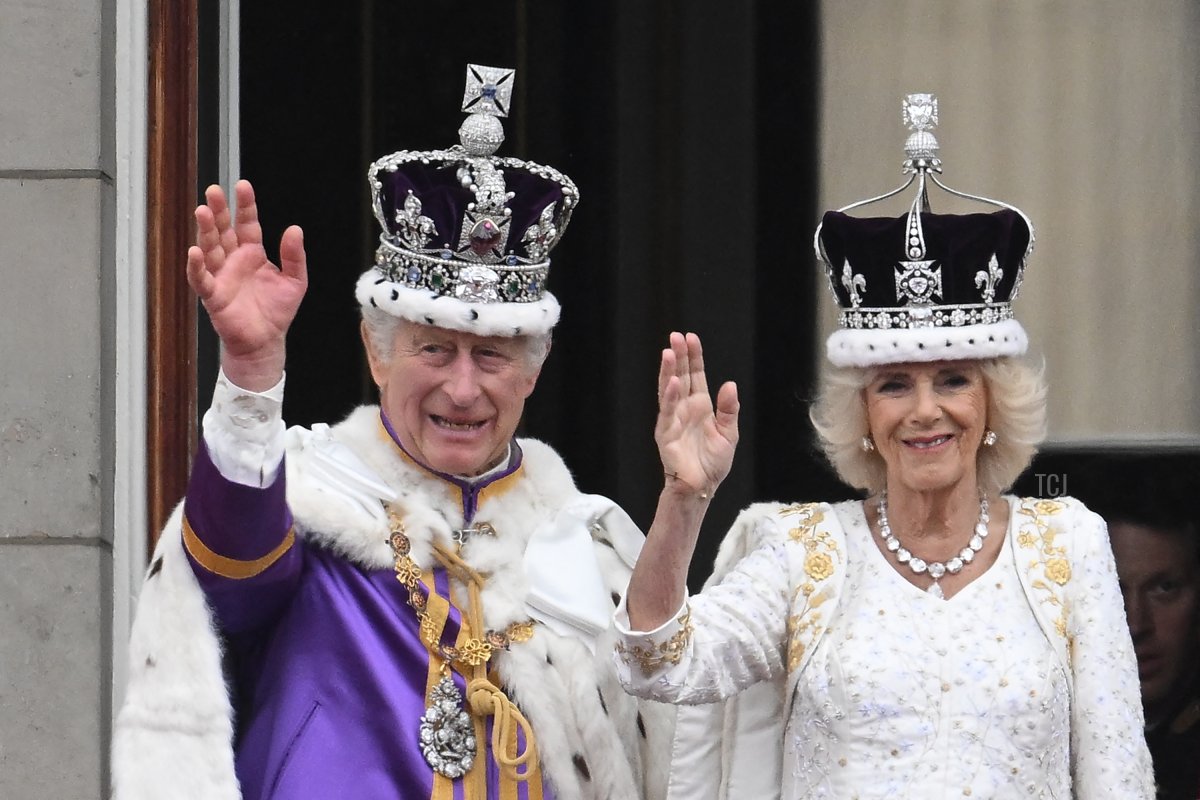
This morning, the world witnessed something it hadn’t seen for 86 years: the joint coronation of a British monarch and his consort. Here’s a closer look at the jewels worn by King Charles III and Queen Camilla for the ancient ceremony at Westminster Abbey.
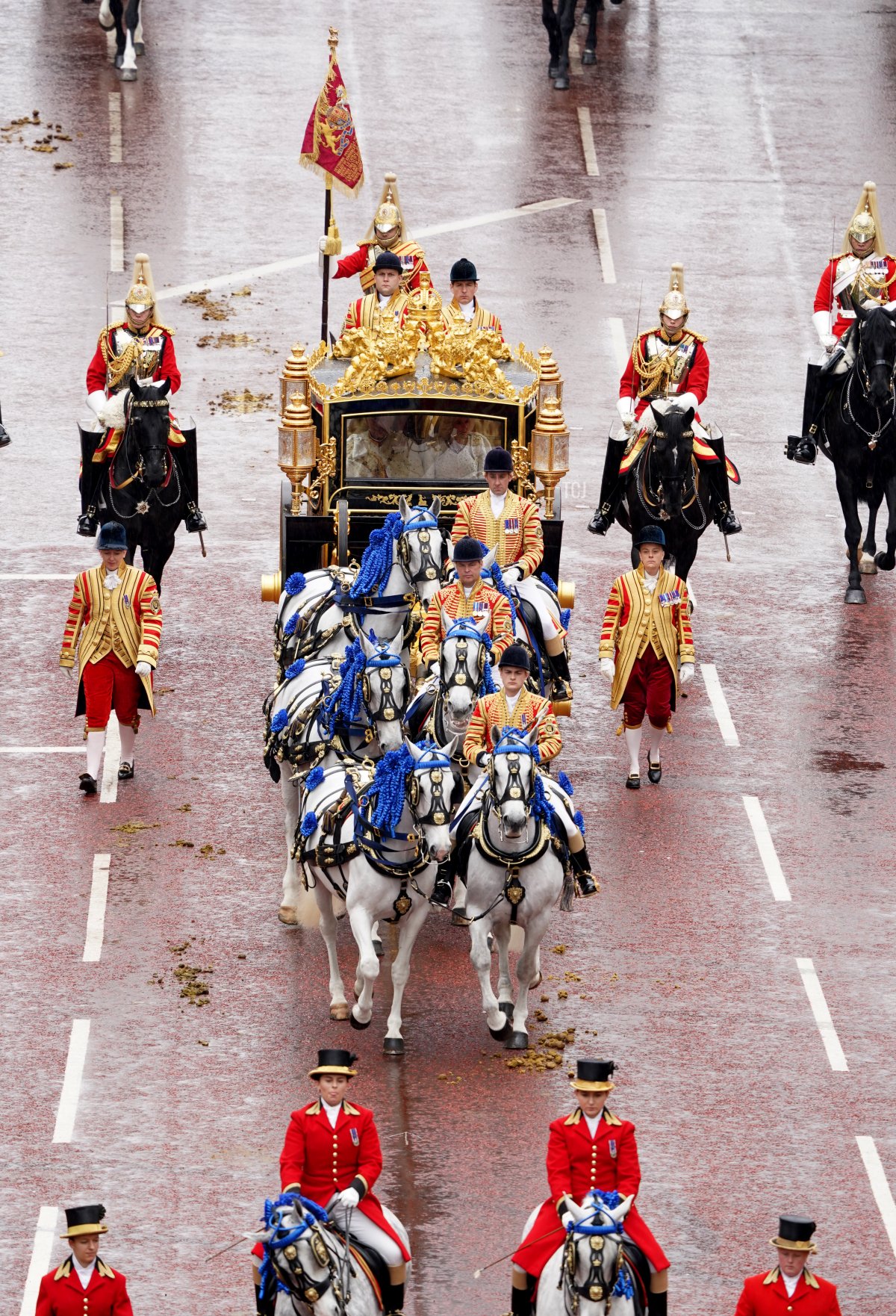
King Charles and Queen Camilla left Buckingham Palace on Saturday morning in the Diamond Jubilee State Coach to travel to Westminster Abbey for their coronation.

King Charles arrived wearing a scarlet and gold tunic over a white shirt and dark trousers. He wore shoes with gold buckle details.

The crimson velvet and ermine Robe of State that Charles wore for the start of the service was worn by his grandfather, King George VI, for his coronation in 1937.
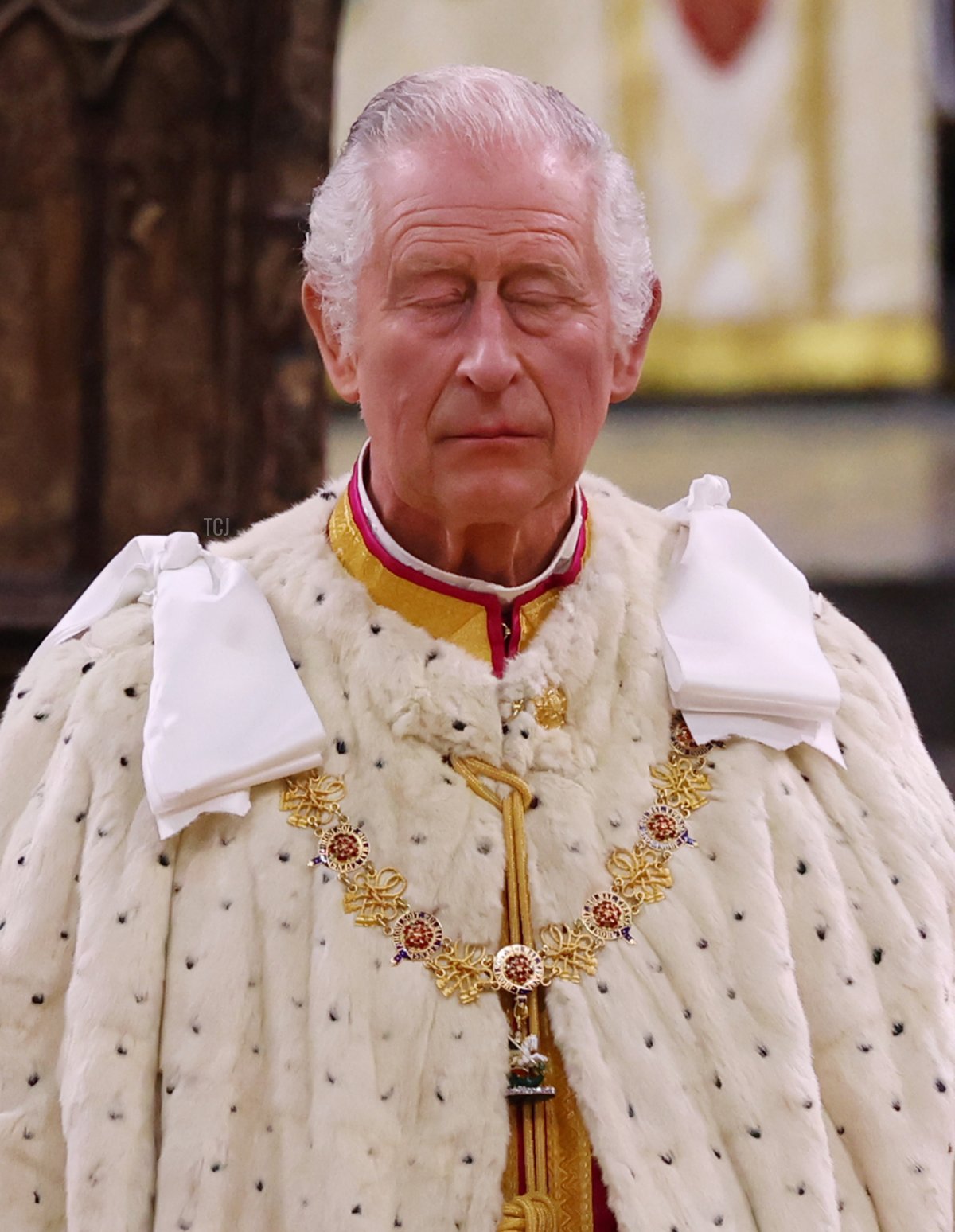
He also wore the collar and badge of the Order of the Garter.
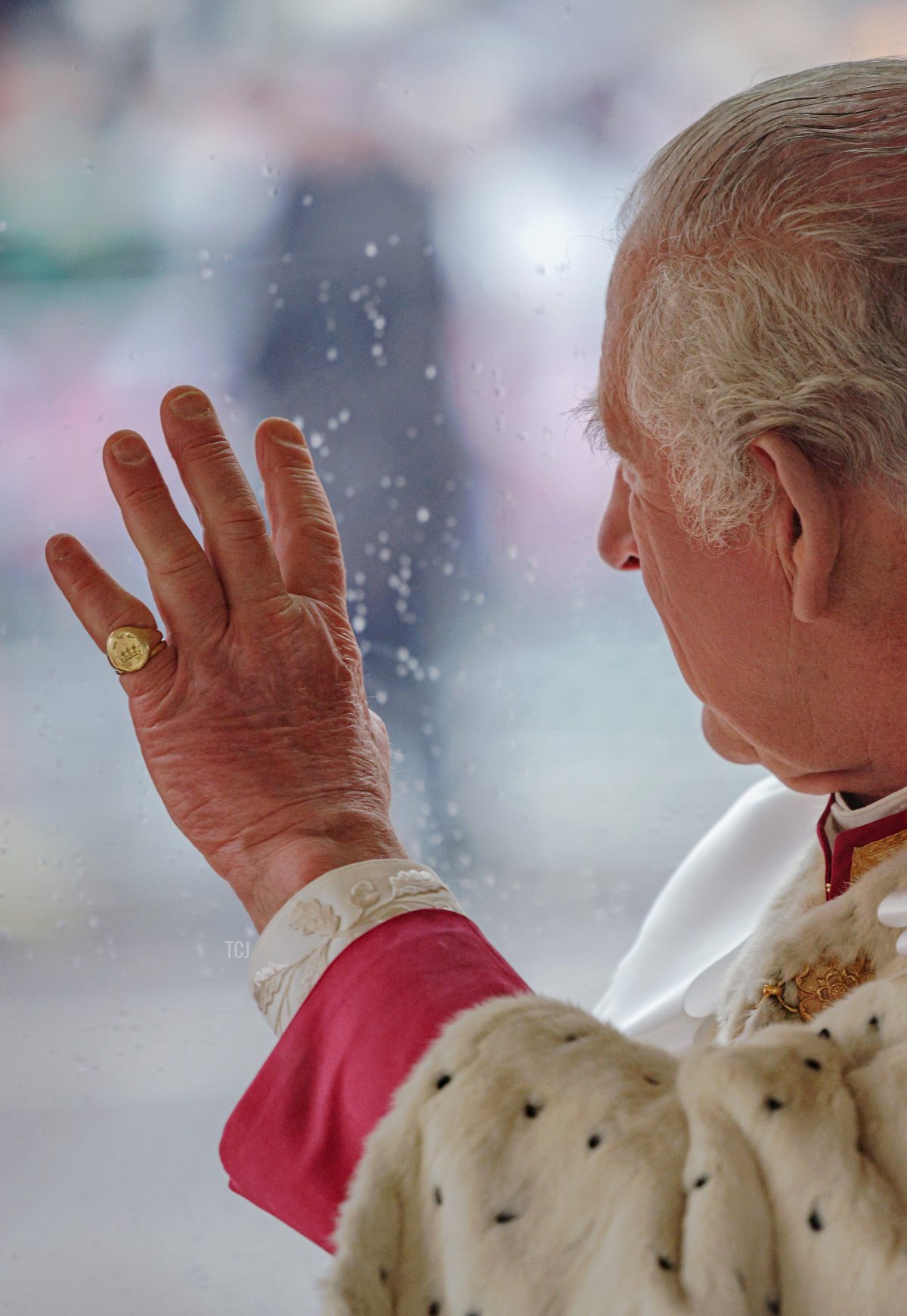
As he waved to the crowds during the procession to the Abbey, Charles’s gold signet ring and wedding band were visible on his left hand.
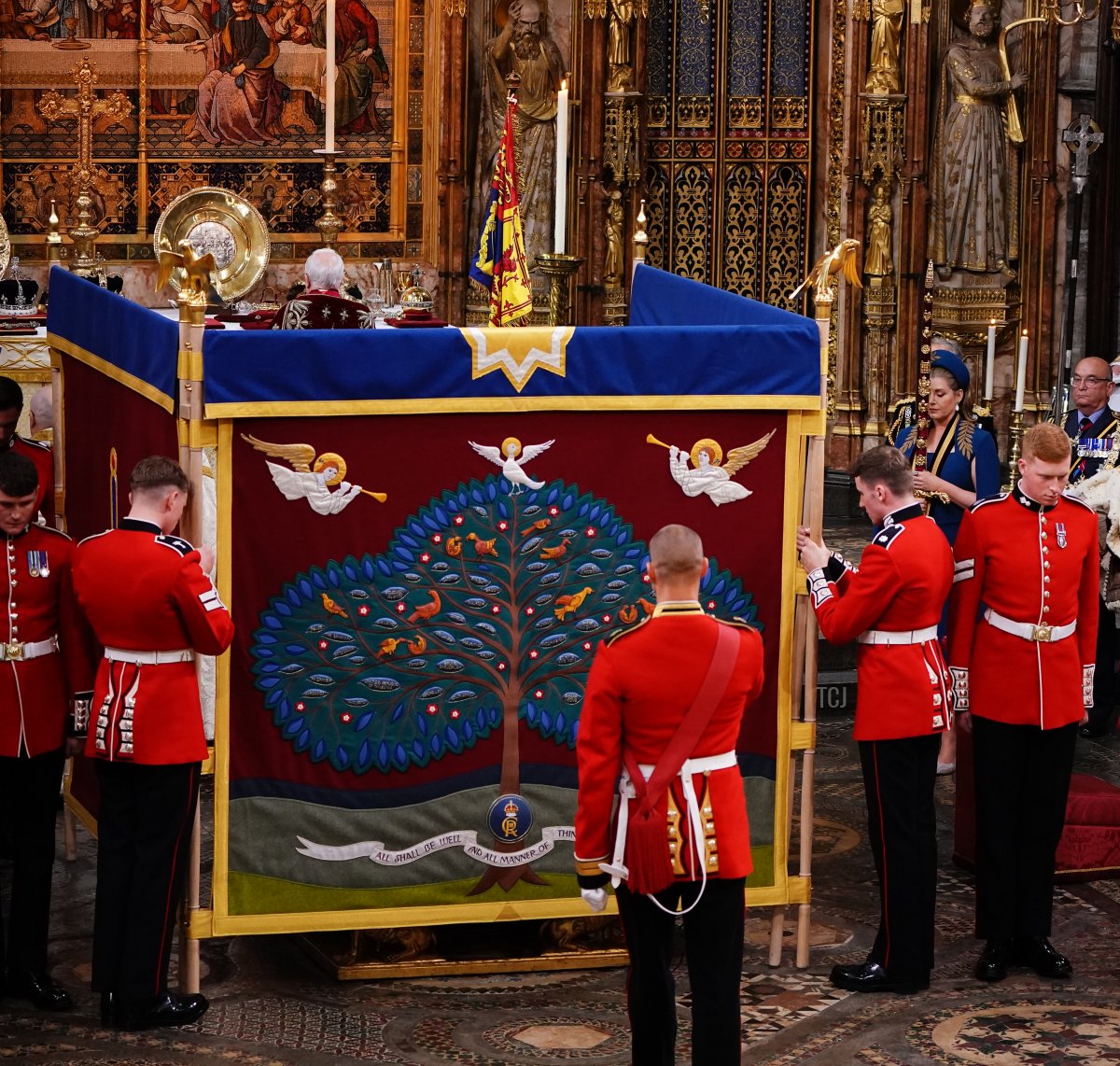
During the most sacred part of the coronation service, the anointing, Charles and the Archbishop of Canterbury were shielded from view by a special embroidered screen. His Robe of State and tunic were removed before he was anointed.

Afterward, he was dressed in a series of ceremonial golden robes, aided by his equerry, Major Johnny Thompson, and by the Prince of Wales.
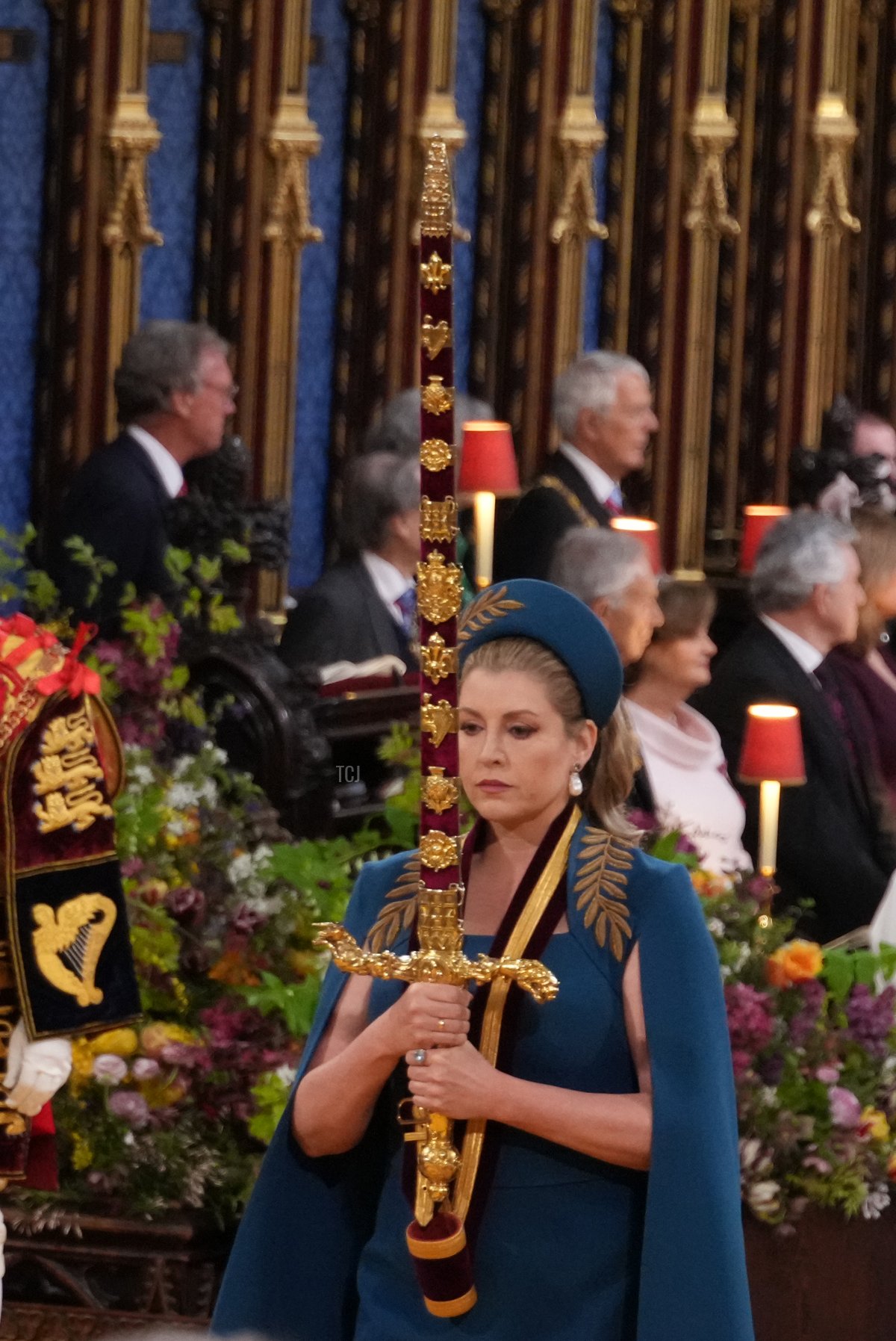
Next came the presentation of the coronation regalia. The Lord President of the Council, Penny Mordaunt, exchanged the sword of state for the smaller Jewelled Sword of Offering.
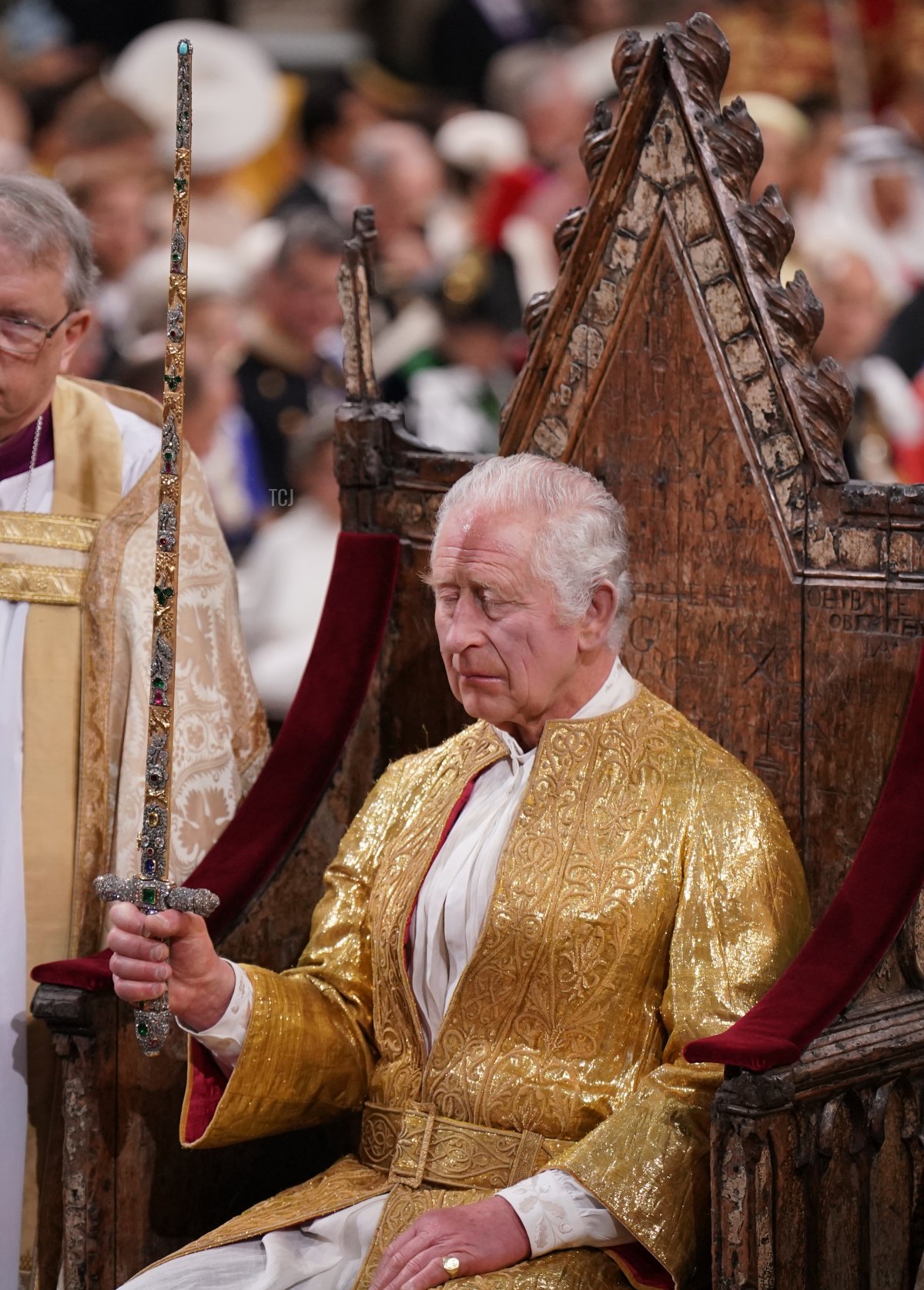
Here’s Charles holding the Sword of Offering as he sits in the Coronation Chair.
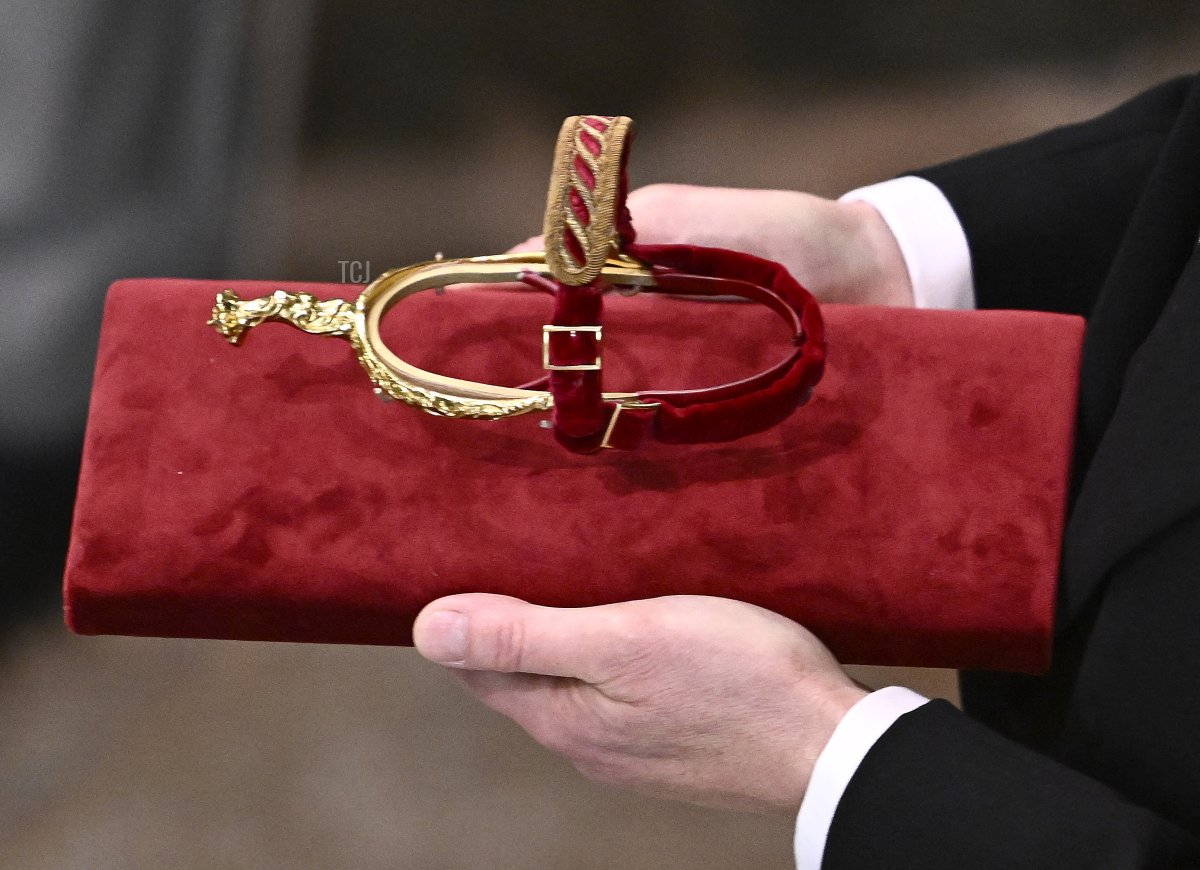
Next, the coronation spurs were presented to the King, who touched them briefly.
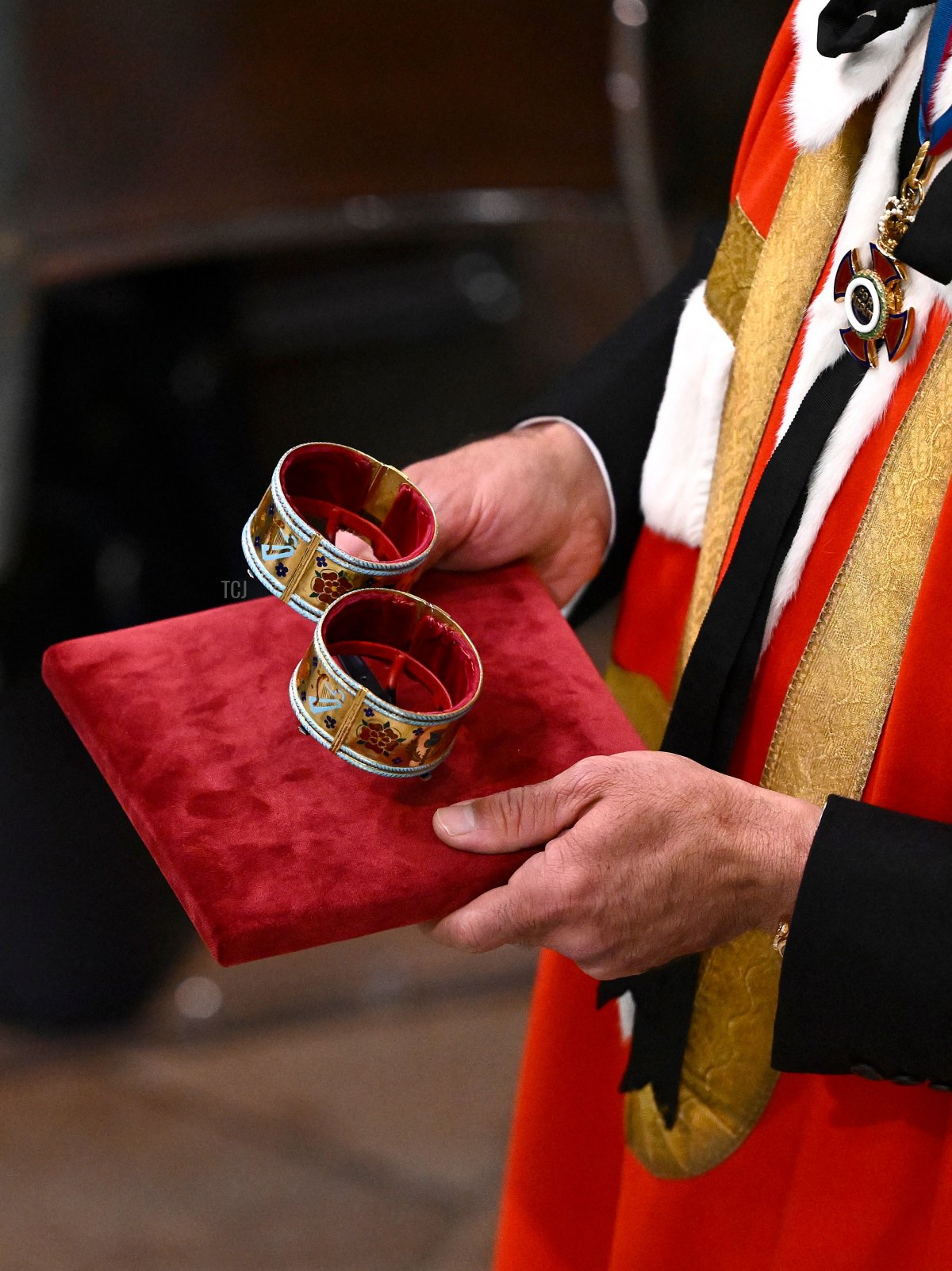
In a break from tradition, Charles did the same motion with the armills, briefly touching them rather than wearing them.
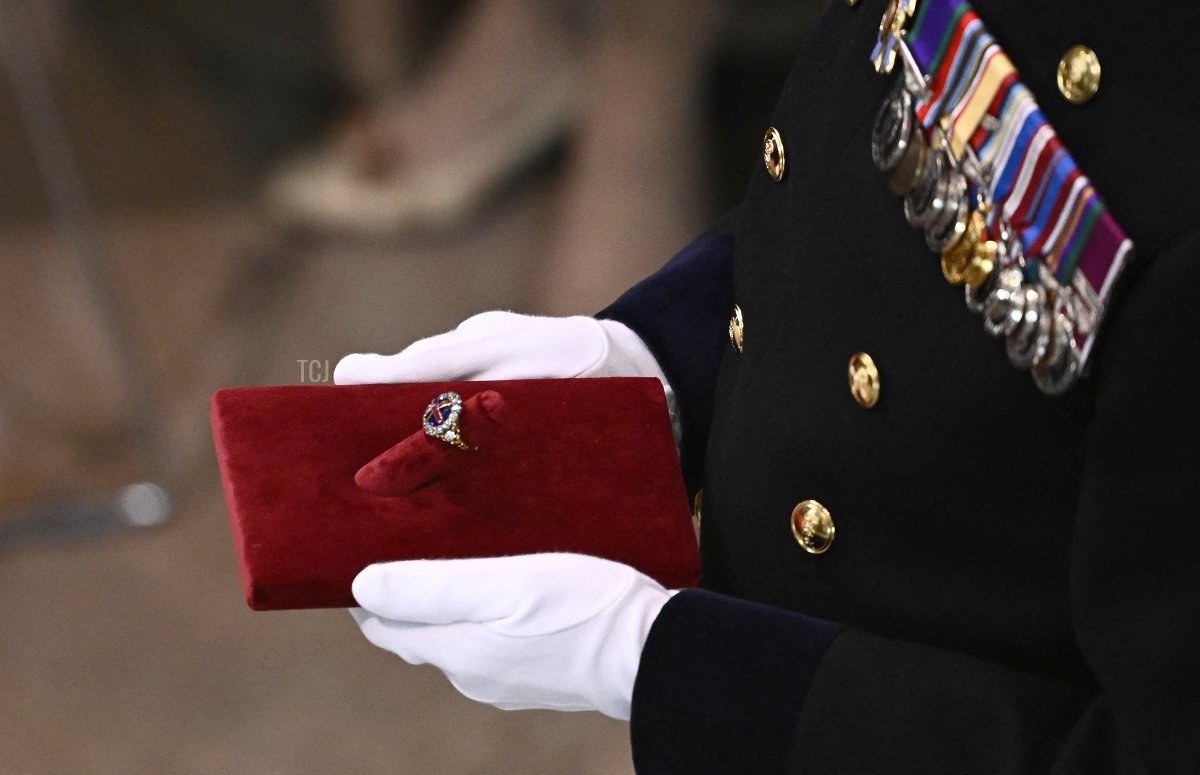
And he also touched the Sovereign’s Ring rather than putting it on. (Camilla did the same with the Queen Consort’s Ring.)
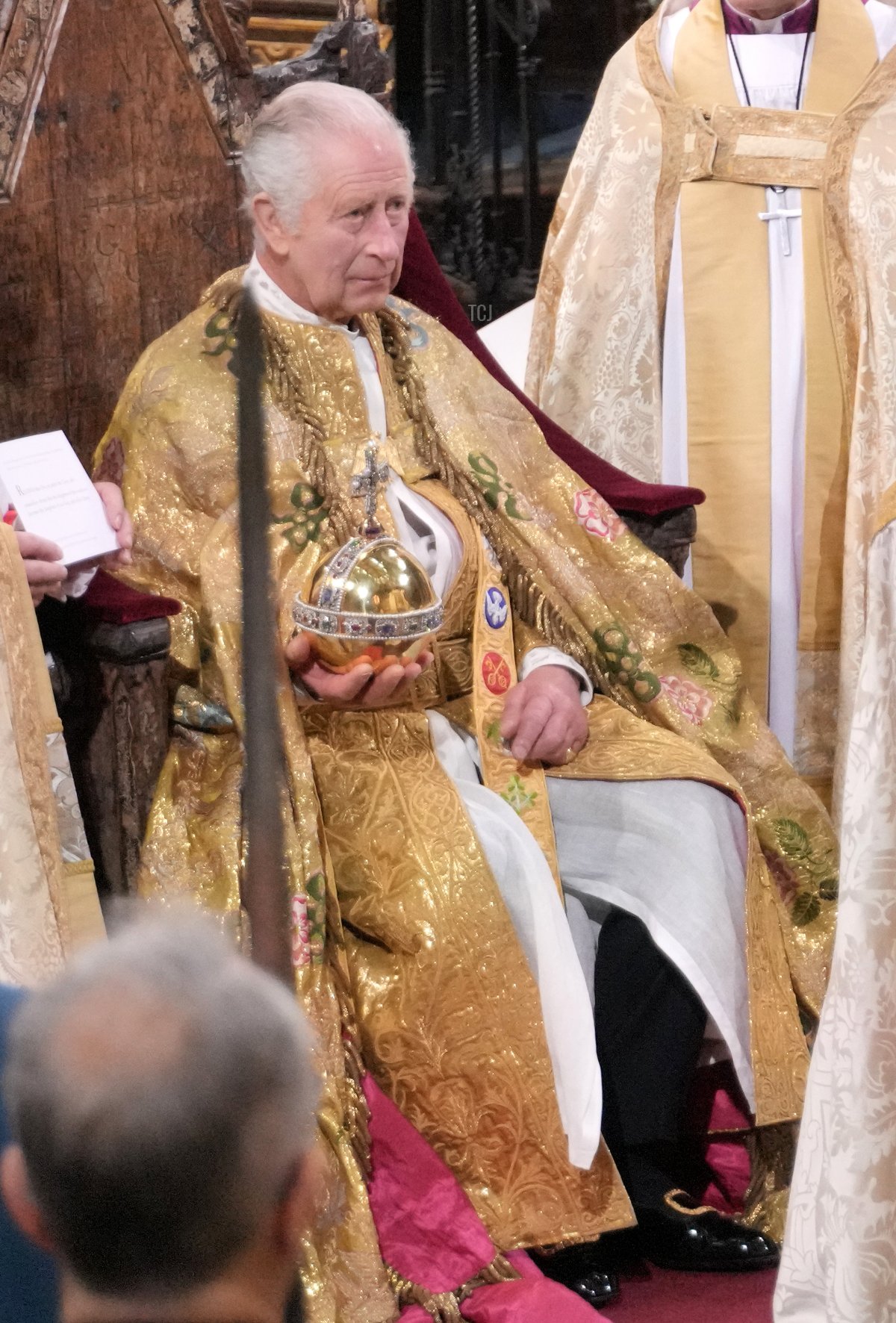
He did hold the jeweled Sovereign’s Orb, which symbolizes the power of the monarch.
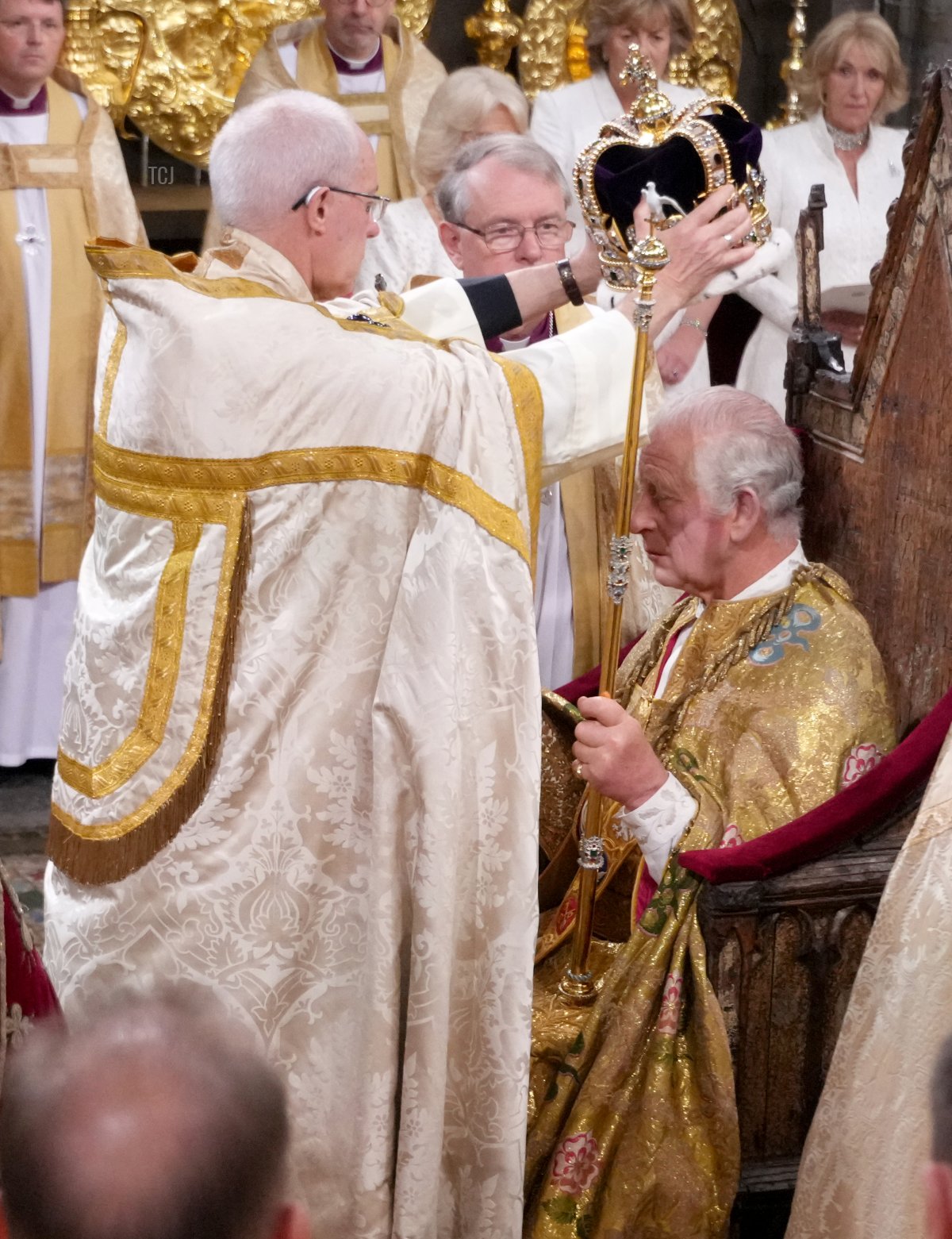
And then, after he was presented with the scepters, it was time for the big moment. The Archbishop of Canterbury, Justin Welby, raised St. Edward’s Crown high in the air and placed it on Charles’s head.
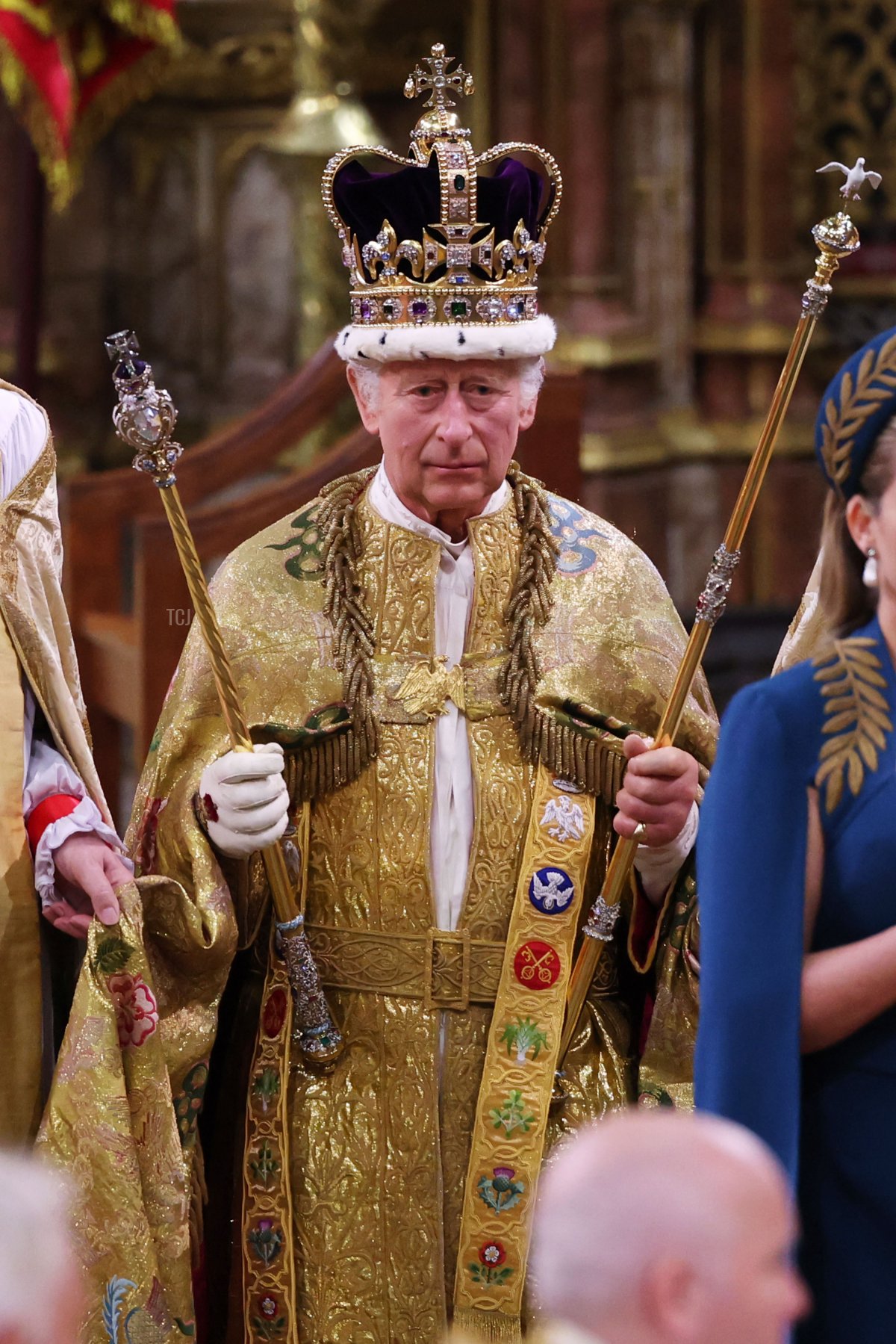
The monarch wore St. Edward’s Crown for the next portion of the service, which included the traditional homage.
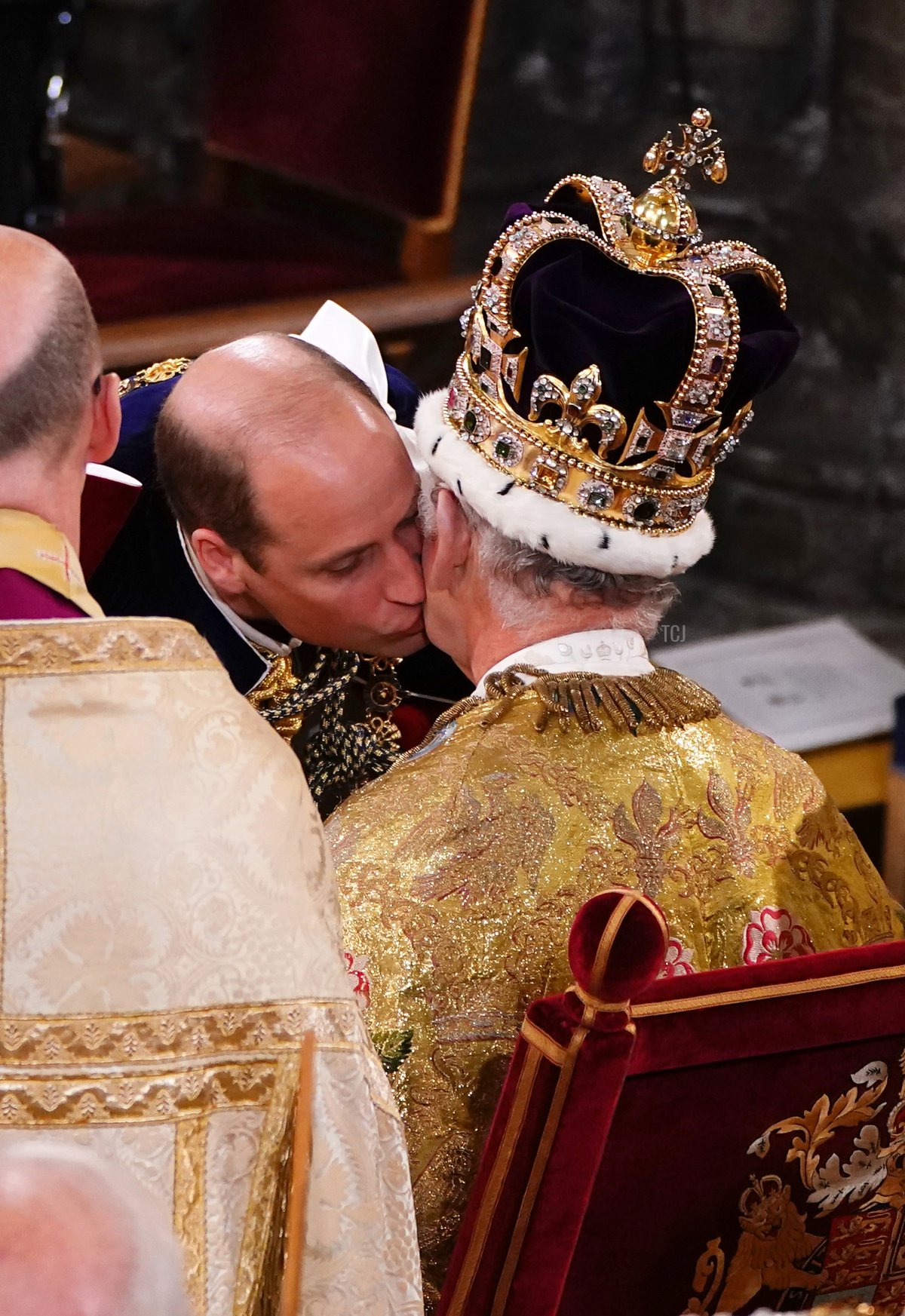
At this coronation, the only person to give homage to the King was the Prince of Wales, who briefly kissed his father’s cheek before rising and returning to his seat.
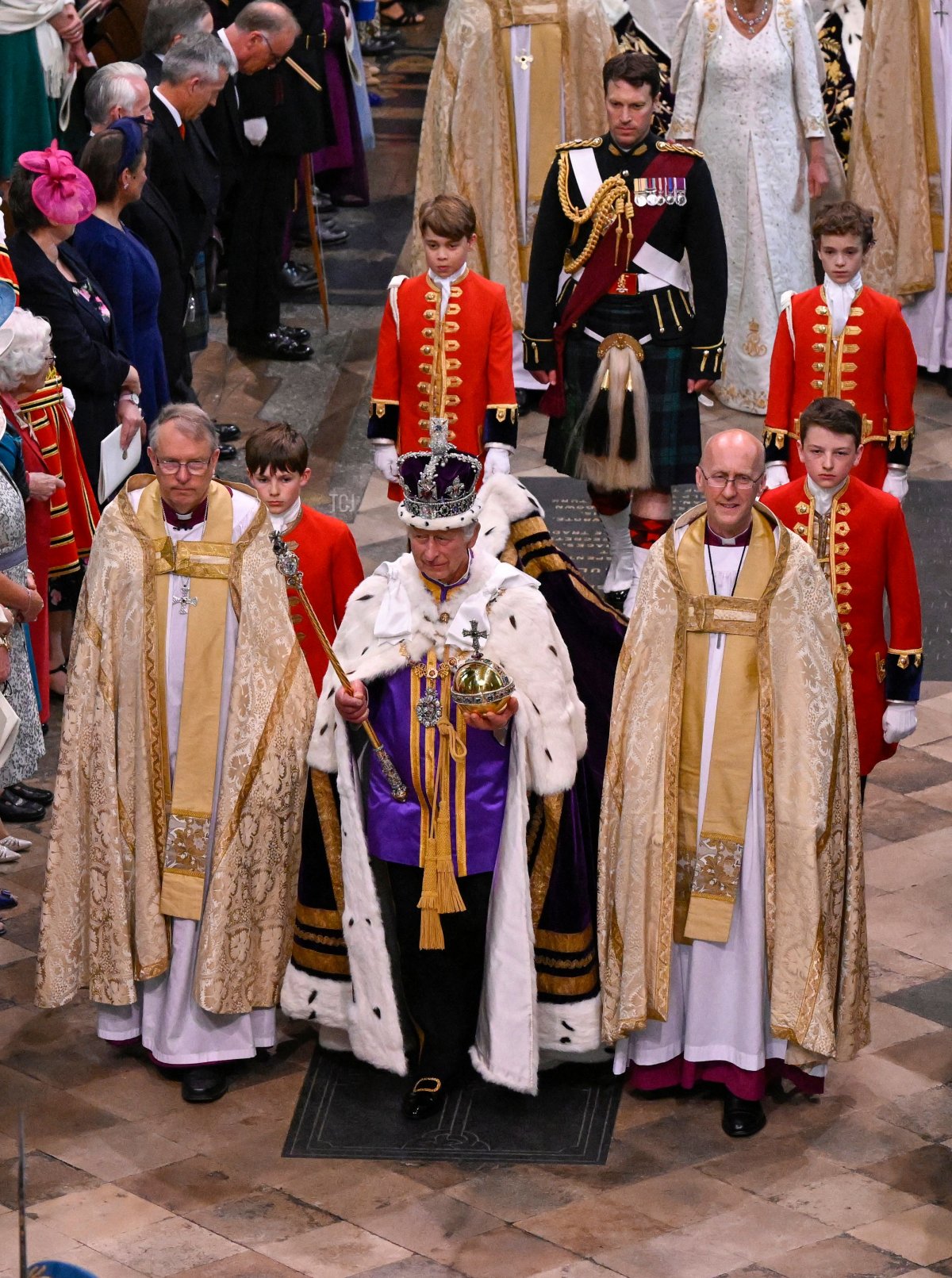
After Queen Camilla was crowned, the couple progressed to the Shrine of St. Edward the Confessor, where Charles did another wardrobe change. St. Edward’s Crown was swapped for the lighter Imperial State Crown, and the golden robes were removed and replaced with a purple and gold tunic. He donned the purple silk velvet and ermine Robe of Estate made for King George VI in 1937.
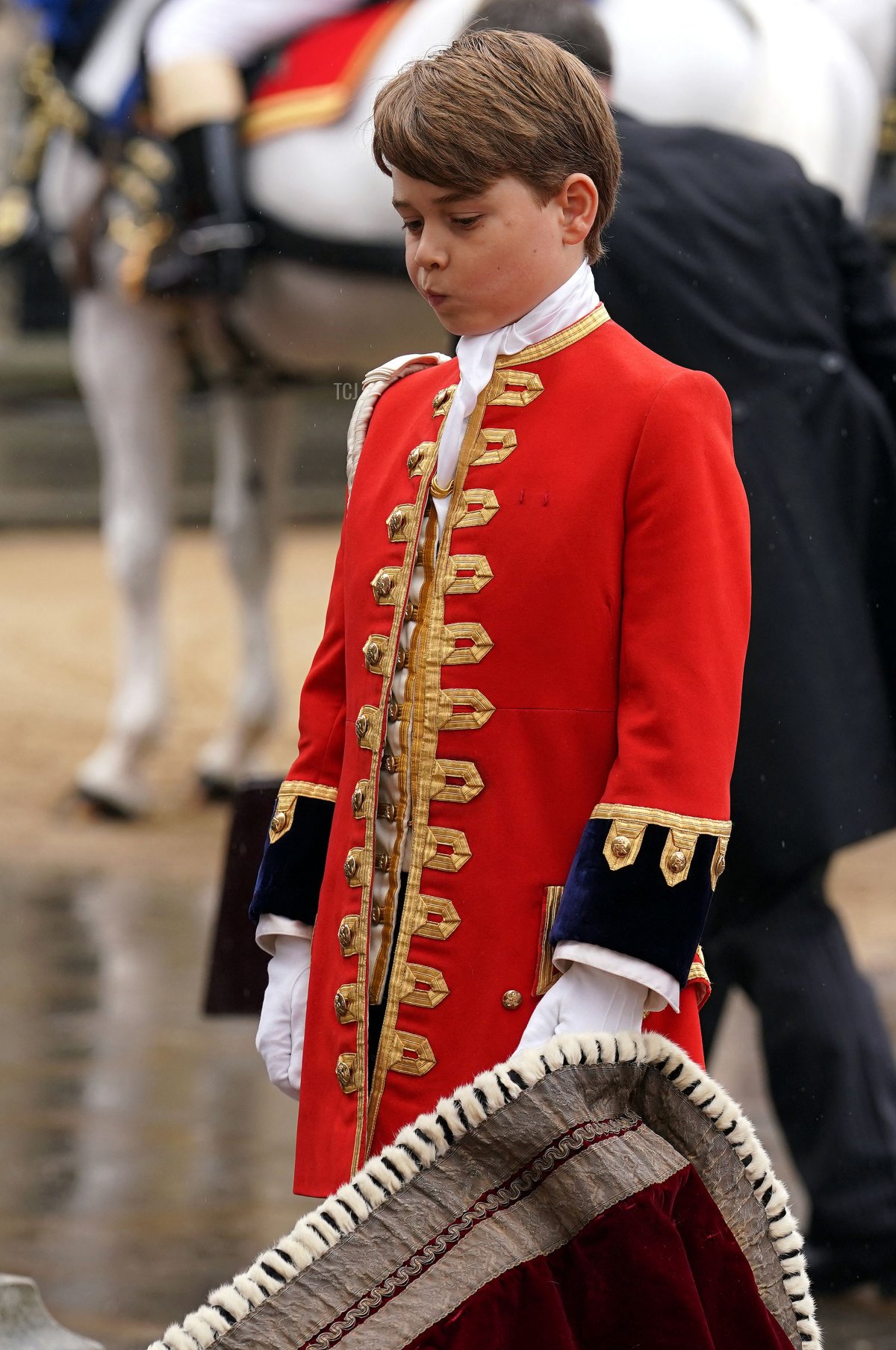
You’ll have spotted one of the pages carrying the King’s robes: Prince George of Wales, his grandson. George carried robes worn by his grandfather and great-great-grandfather for a ceremony that he too will one day likely experience as King George VII.
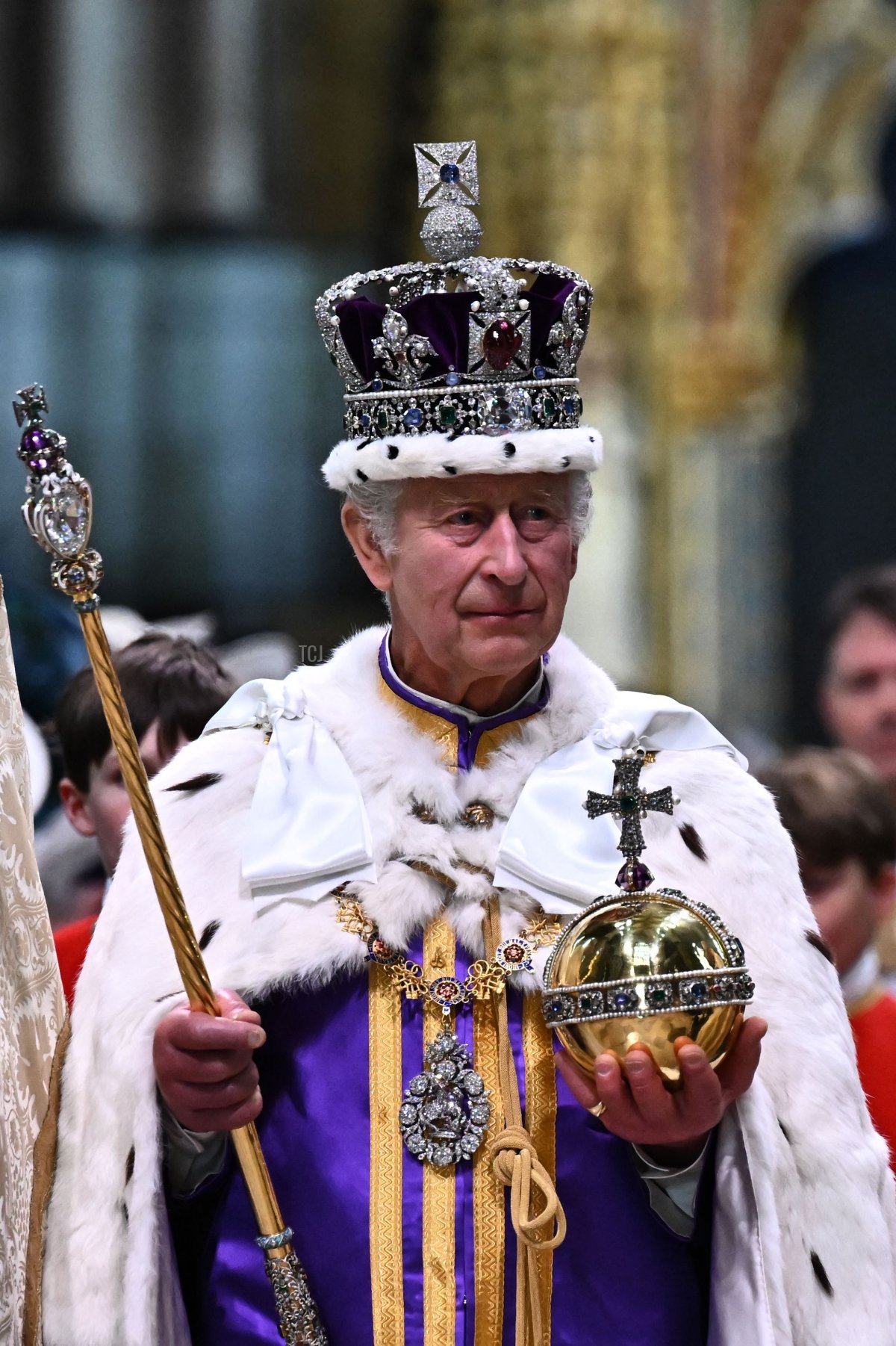
Charles also swapped out his Garter badge for a much sparklier one for his departure from the Abbey.
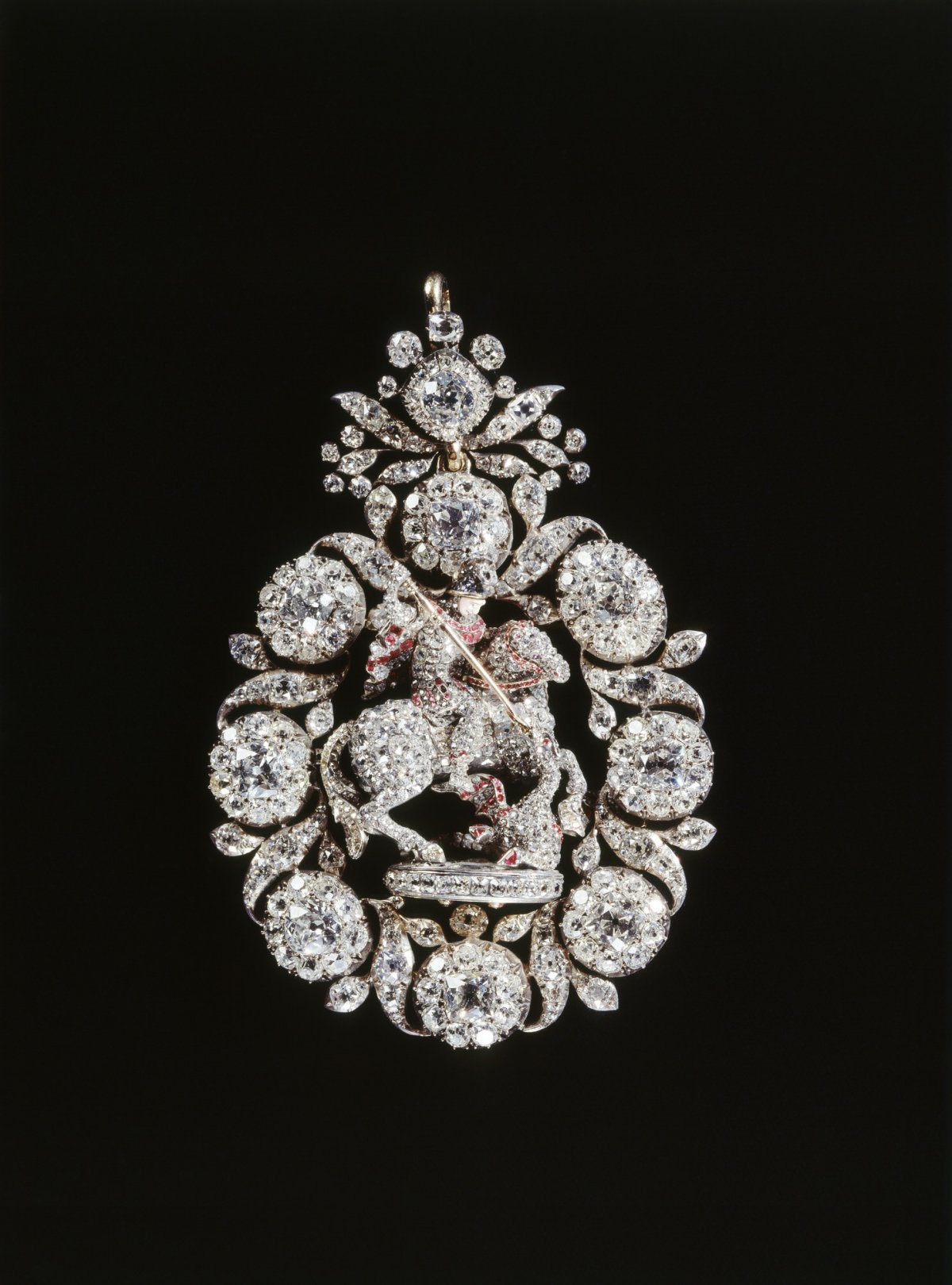
The eighteenth-century badge, which is encrusted with diamonds, was also worn by King George V and King George VI for their coronations in 1911 and 1937.
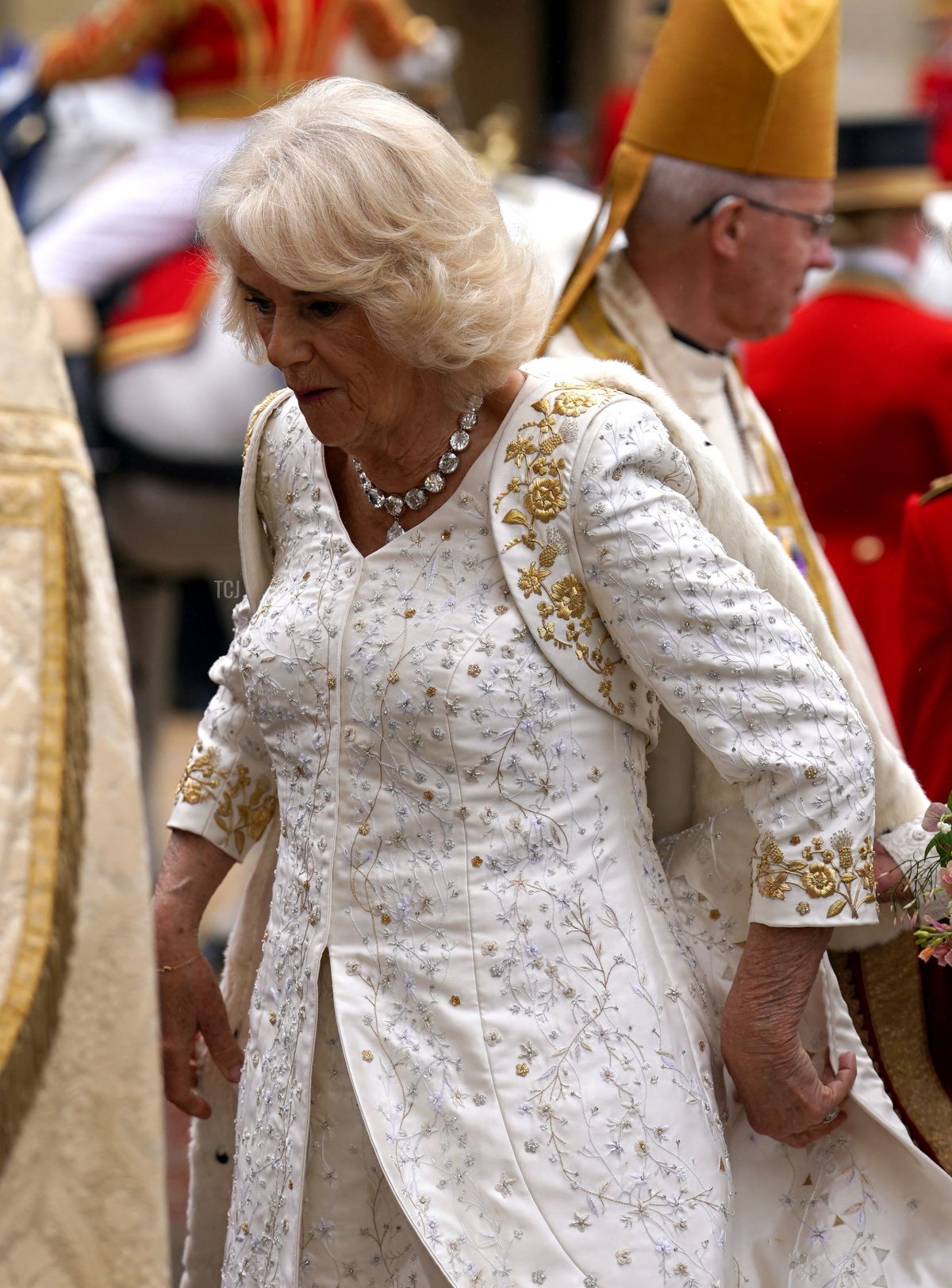
Britain also crowned its queen consort today for the first time since 1937. Queen Camilla arrived bare-headed at the Abbey, following the examples of her three most recent predecessors, Queen Elizabeth the Queen Mother, Queen Mary, and Queen Alexandra.
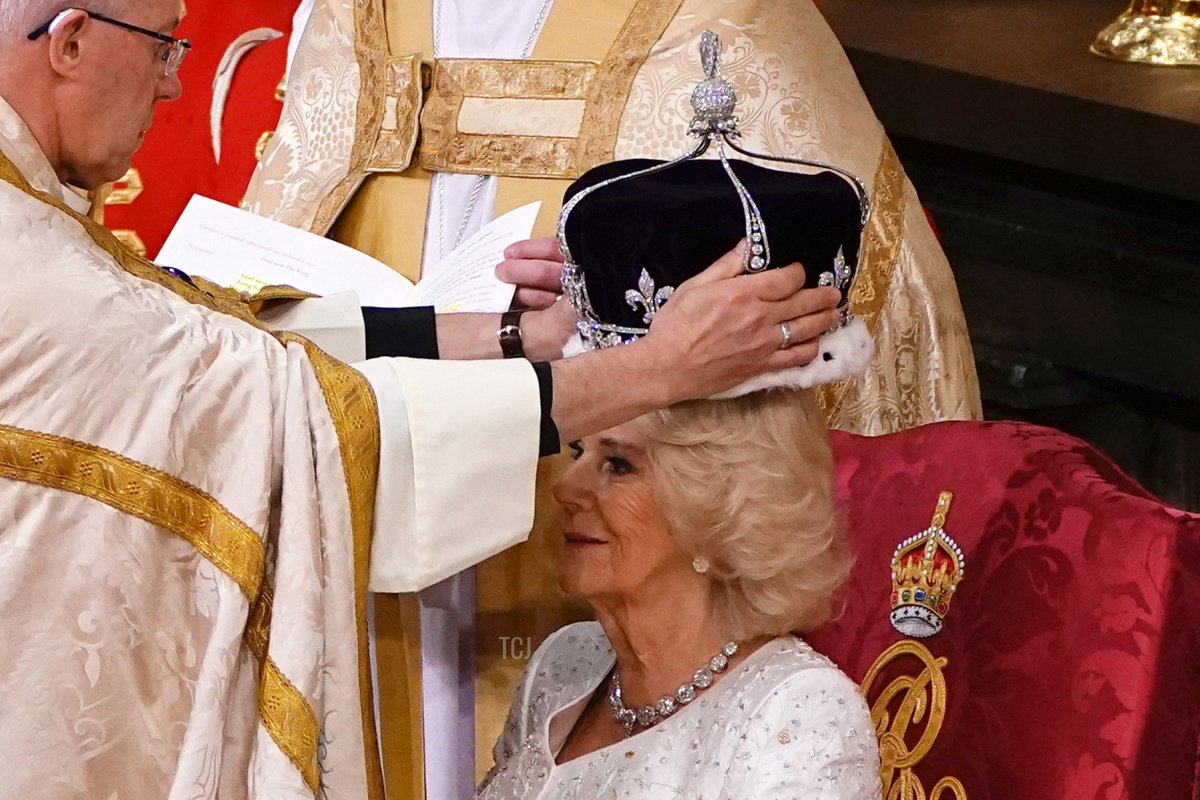
She was crowned by the Archbishop of Canterbury with Queen Mary’s Coronation Crown during the ceremony.

The crown, made in 1911, was altered slightly for this coronation. Four of the arches were removed, and three of the Cullinan Diamonds were incorporated into the piece.
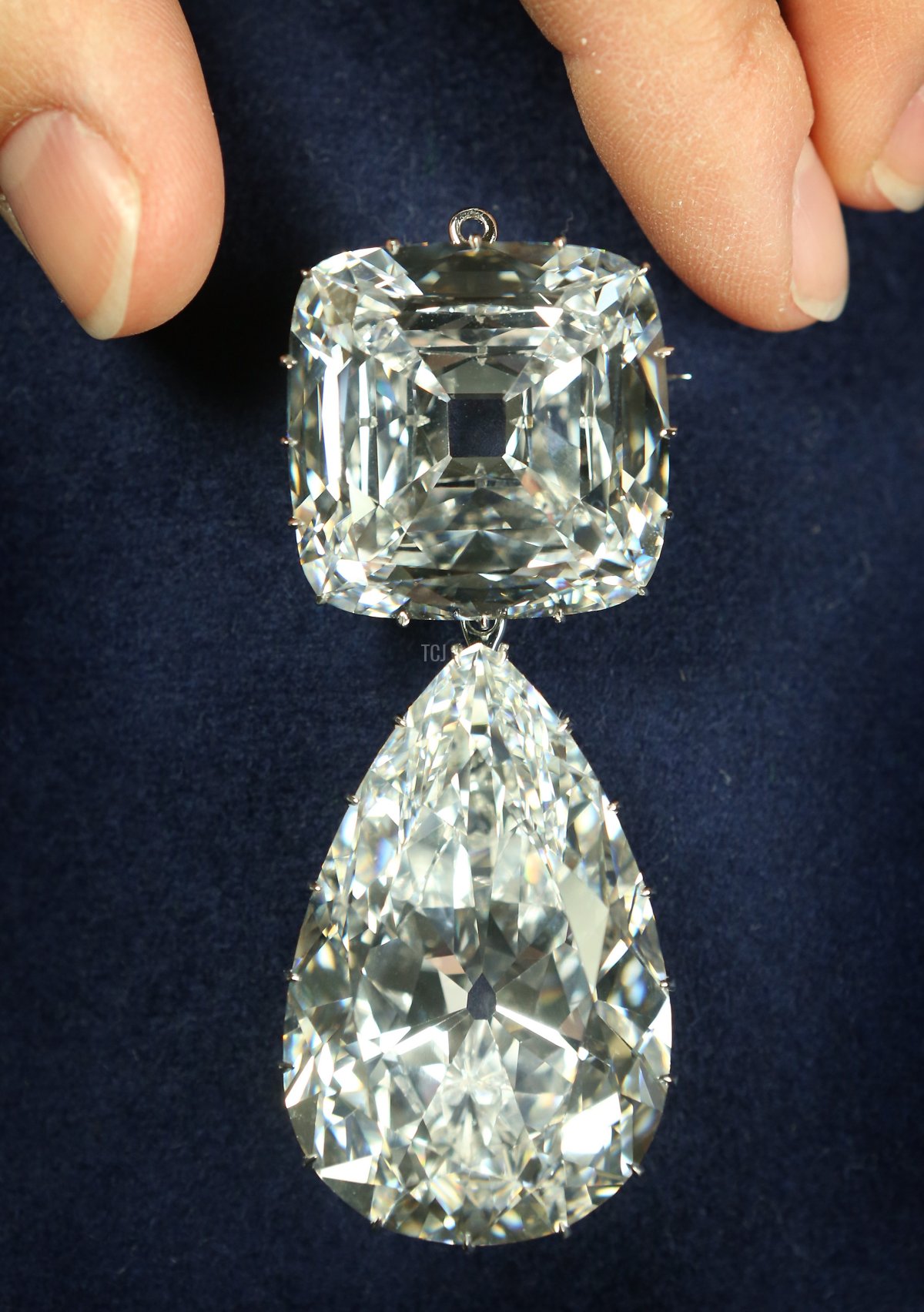
The Cullinan III and IV Diamonds, usually worn together as a brooch, were placed in the crown for the coronation. The pear-shaped Cullinan III was placed in the cross at the top of the crown, while the Cullinan IV was placed on the crown’s base.
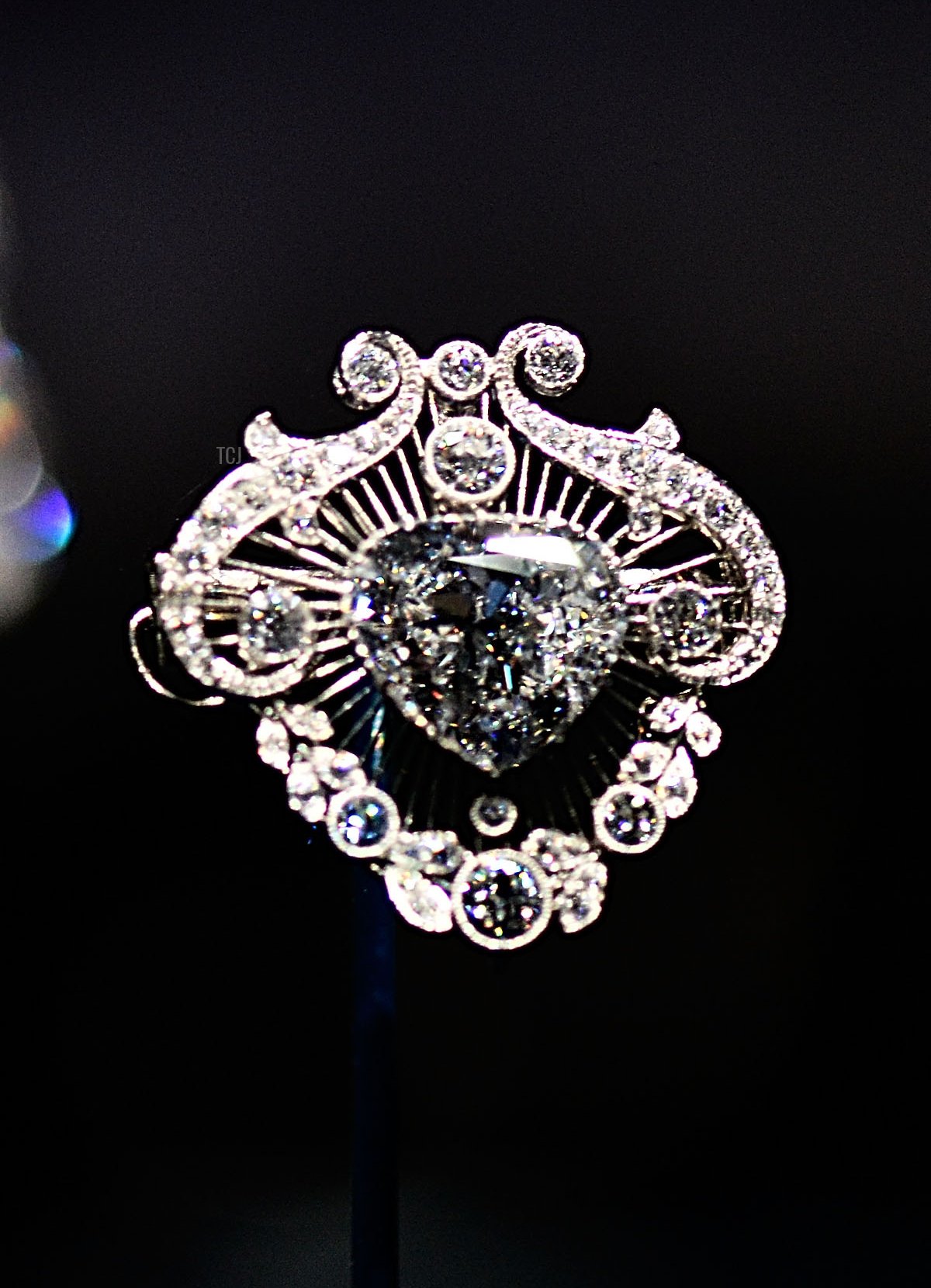
A third Cullinan brooch was also included. The heart-shaped Cullinan V Brooch was placed in the spot where the Koh-i-Noor Diamond was originally set. Queen Mary wore the Cullinan V in this place for the 1937 coronation.
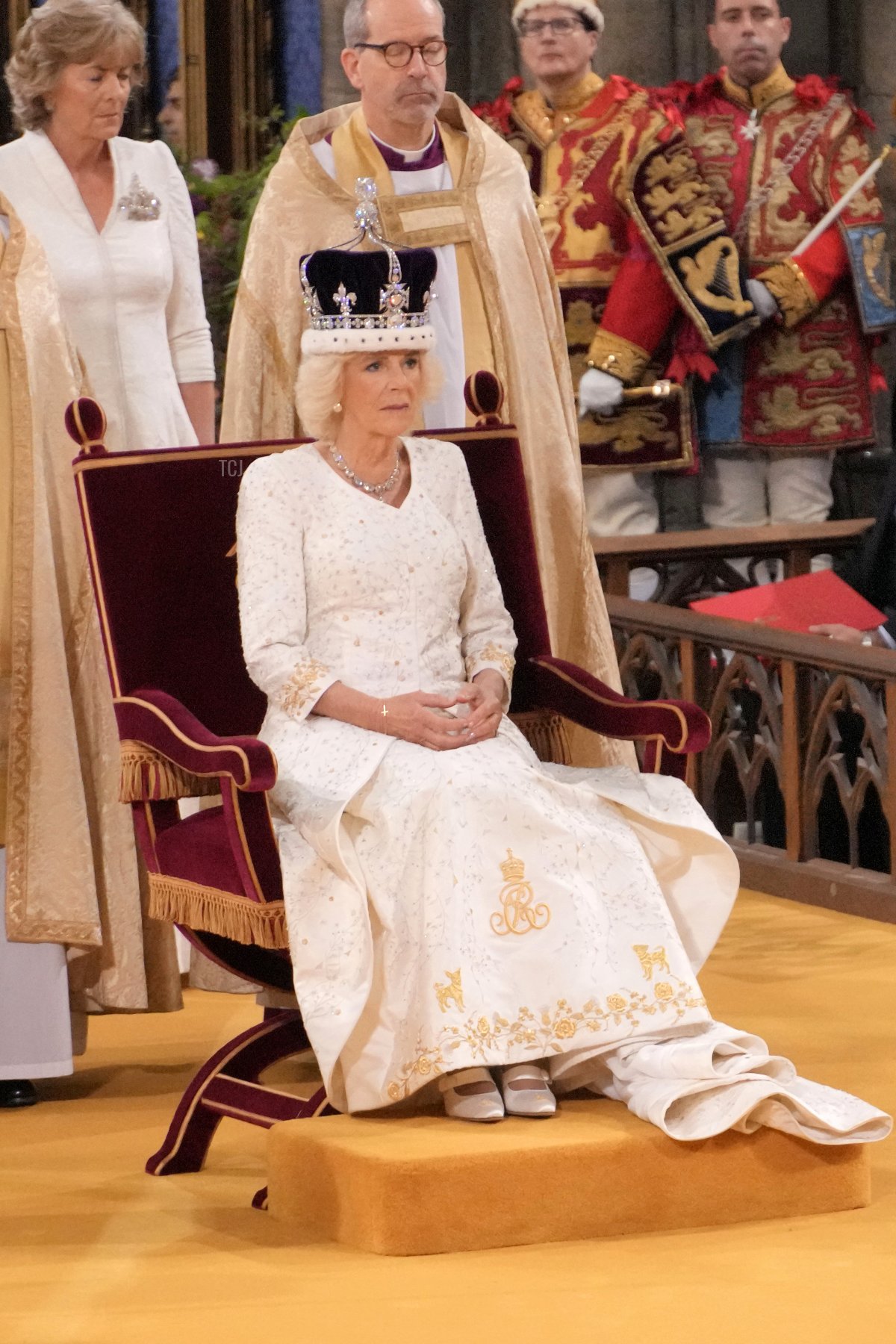
Like her predecessors, Camilla also wore an elaborate coronation gown and robes. She wore Queen Elizabeth II’s Robe of State for her arrival at the Abbey, before removing it ahead of her anointing and crowning. Later, she wore her own new Robe of Estate. The dress she wore was made by one of her favorite couturiers, Bruce Oldfield.
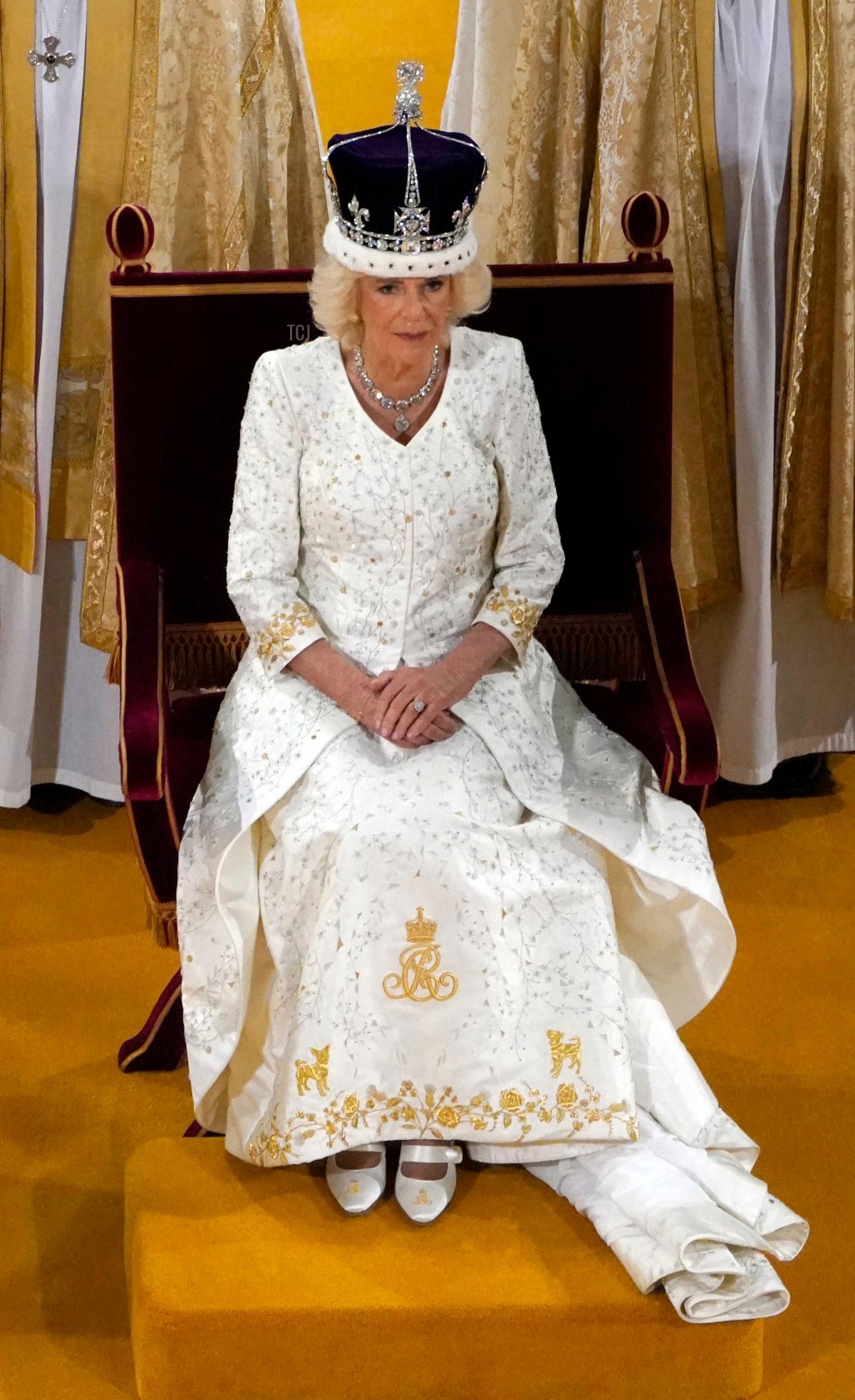
The gown featured intricate embroidery in silver and gold thread. Garlands of wildflowers were sewn all over the gown, including daisy chains, forget-me-nots, celandine and scarlet pimpernel. The cuffs, the straps of her robes, and the hem of her underskirt were all embroidered in gold with national floral emblems (the rose, thistle, daffodil, and shamrock), as well as Camilla’s royal cypher. Sentimentally, the skirt also featured two embroidered dogs, representing Camilla’s two Jack Russell Terriers, Beth and Bluebell. She wore shoes made from the same fabric of her gown that also featured her royal cypher embroidered in gold.
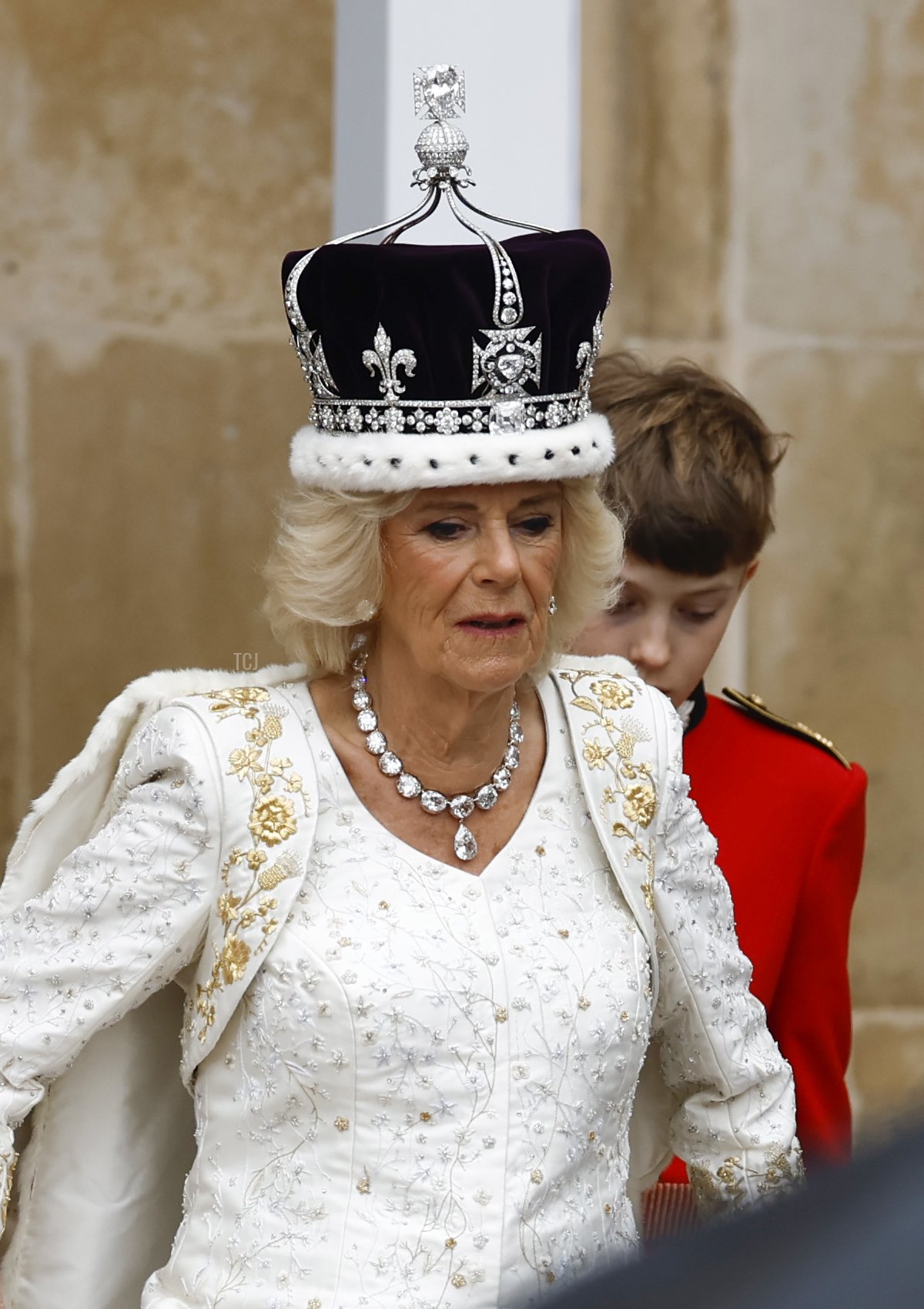
With her crown, Camilla wore jewelry that was relatively understated compared to the ensembles of her predecessors, but the diamonds she wore were significant.
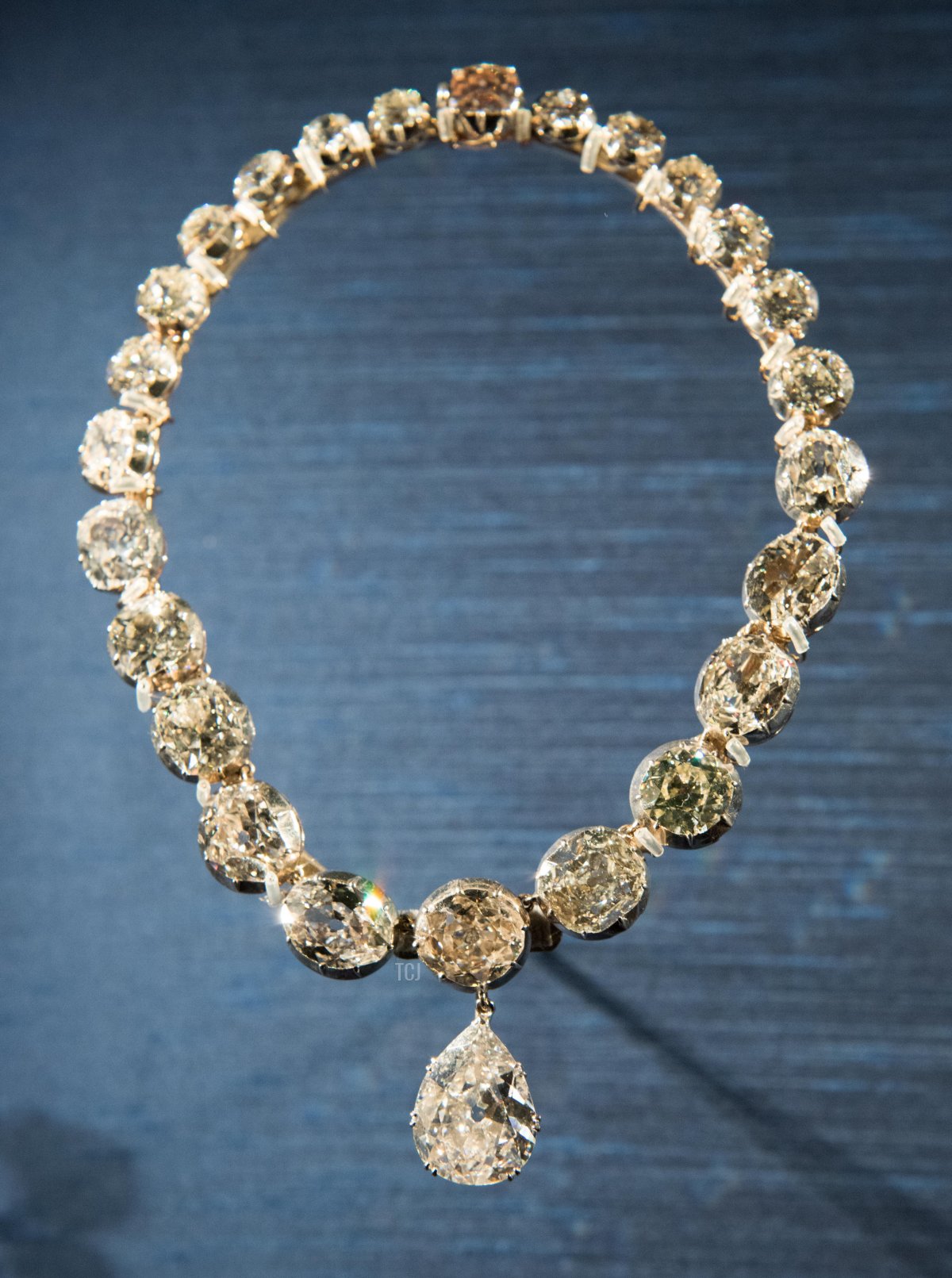
The spotlight piece was the Coronation Necklace, made in 1858 for Queen Victoria to replace a similar necklace that had to be handed over as part of the Hanoverian Claim lawsuit. It was subsequently worn at coronations by Queen Alexandra in 1902, Queen Mary in 1911, Queen Elizabeth the Queen Mother in 1937, and Queen Elizabeth II in 1953.
The stones of the necklace were sourced from existing pieces, like badges and sword hilts in the Britishs collection, but the pendant came from another source. It was presented to Queen Victoria by the British East India Company in 1851, two years after they’d removed it from the Lahore Treasury in present-day Pakistan. (Given their well-founded concerns about the optics of the Koh-i-Noor, I’m sort of surprised that they didn’t leave the pendant off. But, unlike the Koh-i-Noor, the Lahore Diamond isn’t part of a major international lawsuit, to my knowledge.)
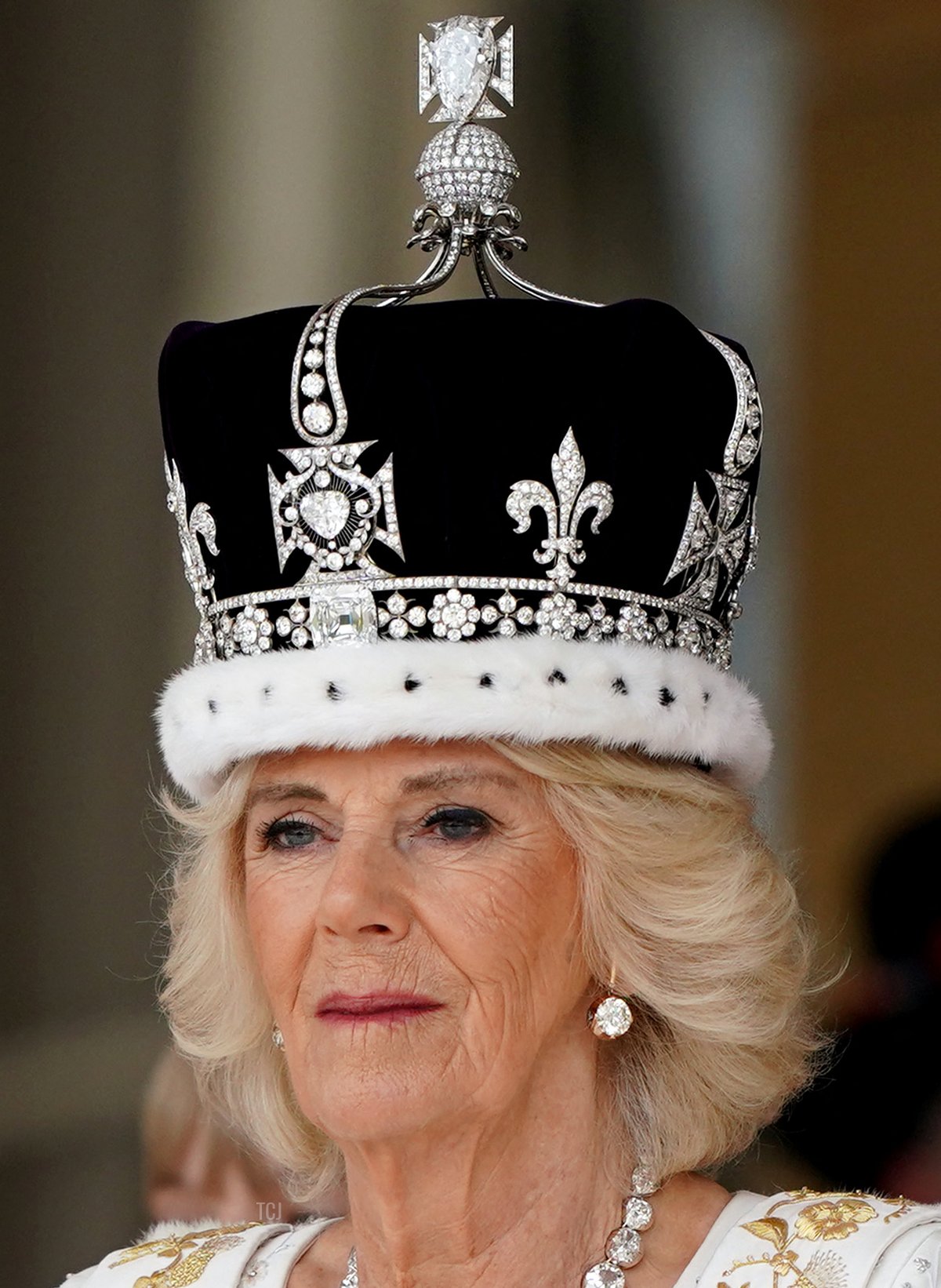
Camilla doesn’t have pierced ears, so she didn’t wear the coordinating Coronation Earrings. Instead, she wore a pair of diamond drop earrings from her own collection. The earrings feature large round diamonds in a modern gold setting with a triangular gold stud.
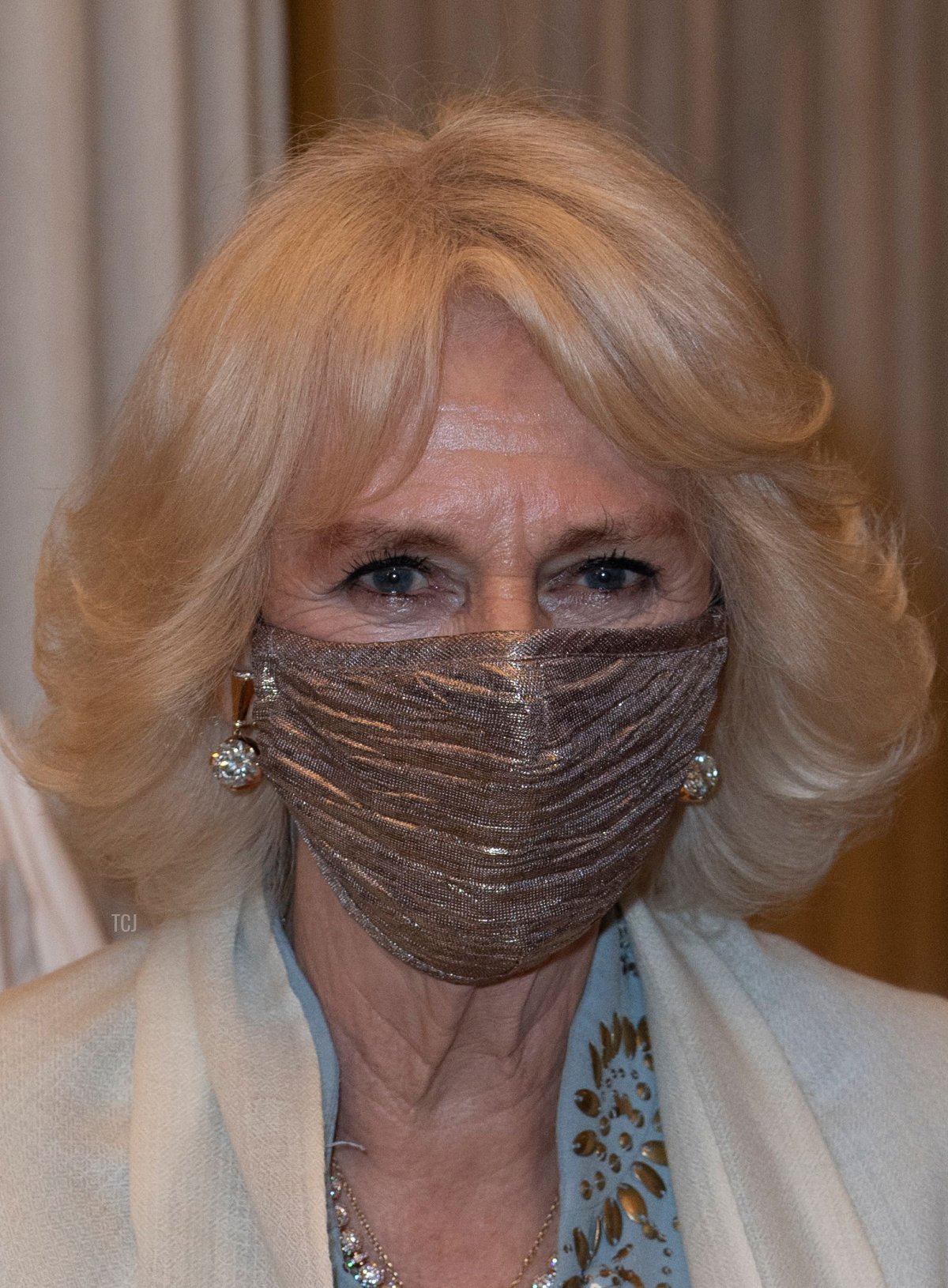
We’ve seen Camilla wear these on other occasions. She notably wore them in March 2021 for a dinner in Athens during an official visit to Greece.
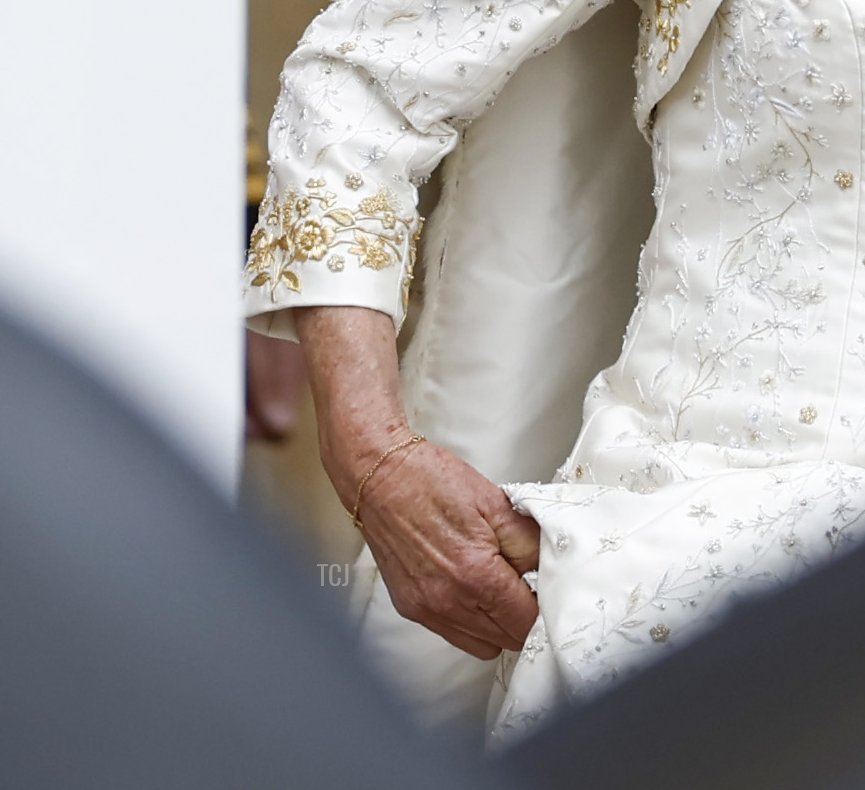
Camilla usually wears a big stack of bracelets on her right wrist, but for the coronation, she wore just a simple gold chain bracelet with a gold cross charm.

We also saw her diamond engagement ring and her Welsh gold wedding band on her left hand.
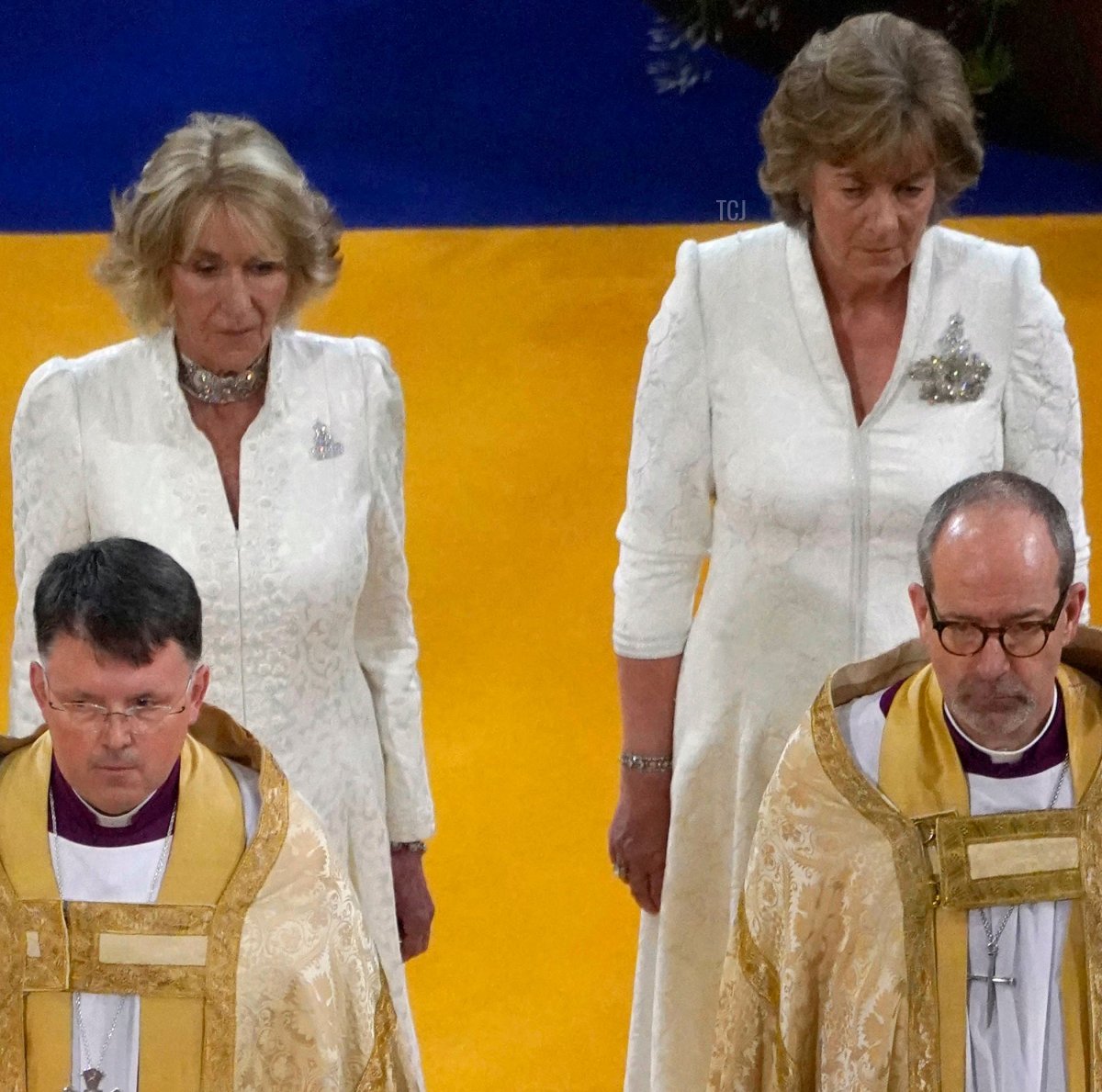
Before we wrap up this article, I know you’ll want to enjoy the jewels worn by the Queen’s Companions who accompanied Camilla on Coronation Day: her sister, Annabel Elliot, and her good friend, the Marchioness of Lansdowne. Both wore diamond badges pinned to their white dresses. Annabel also added a diamond choker necklace, and Fiona Lansdowne wore an impressive diamond floral brooch.
Leave a Reply
You must be logged in to post a comment.